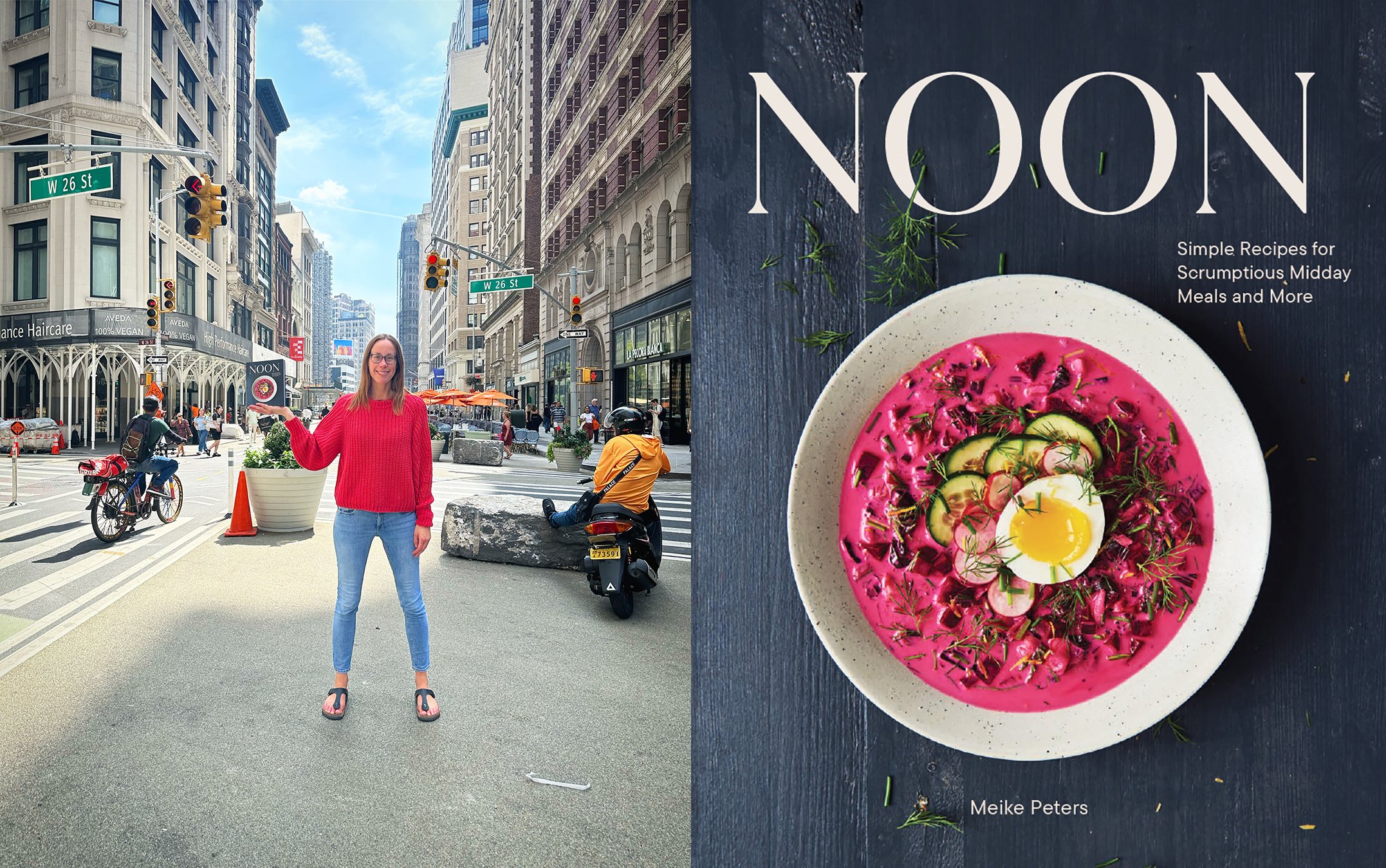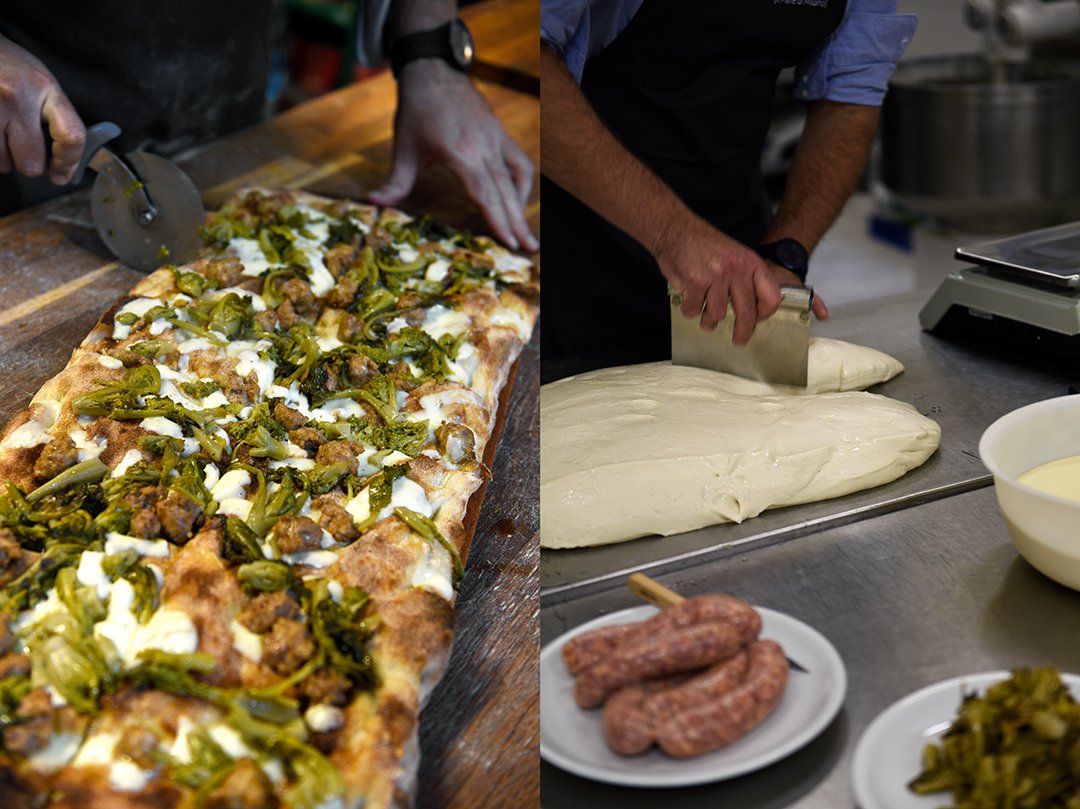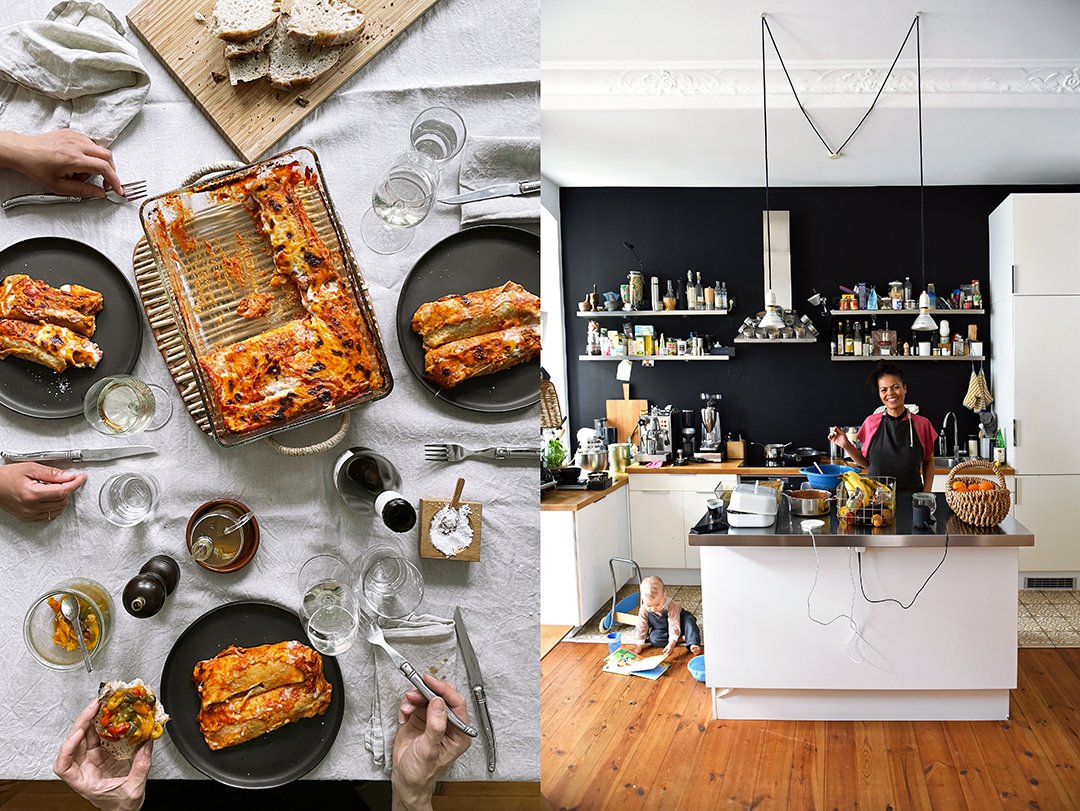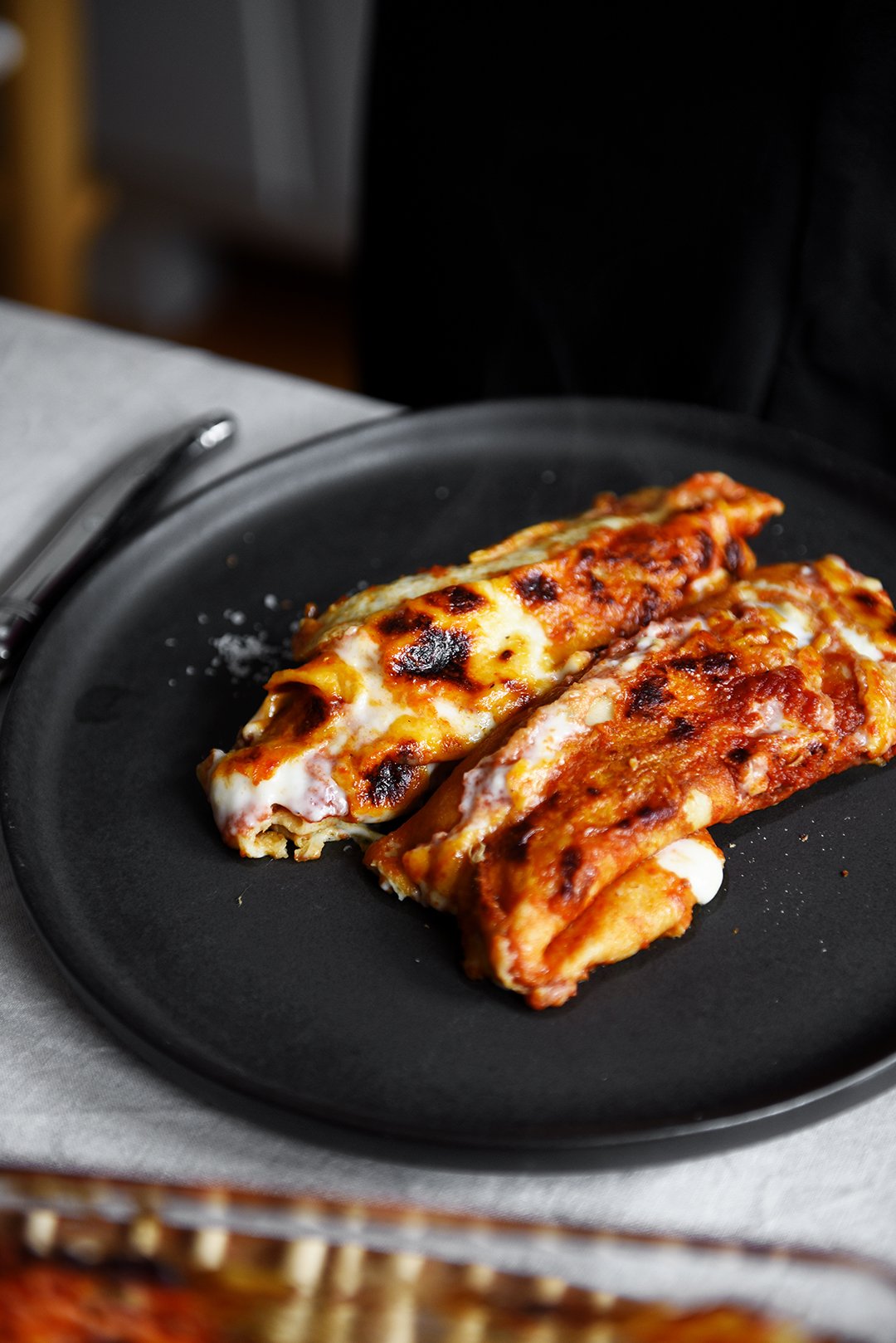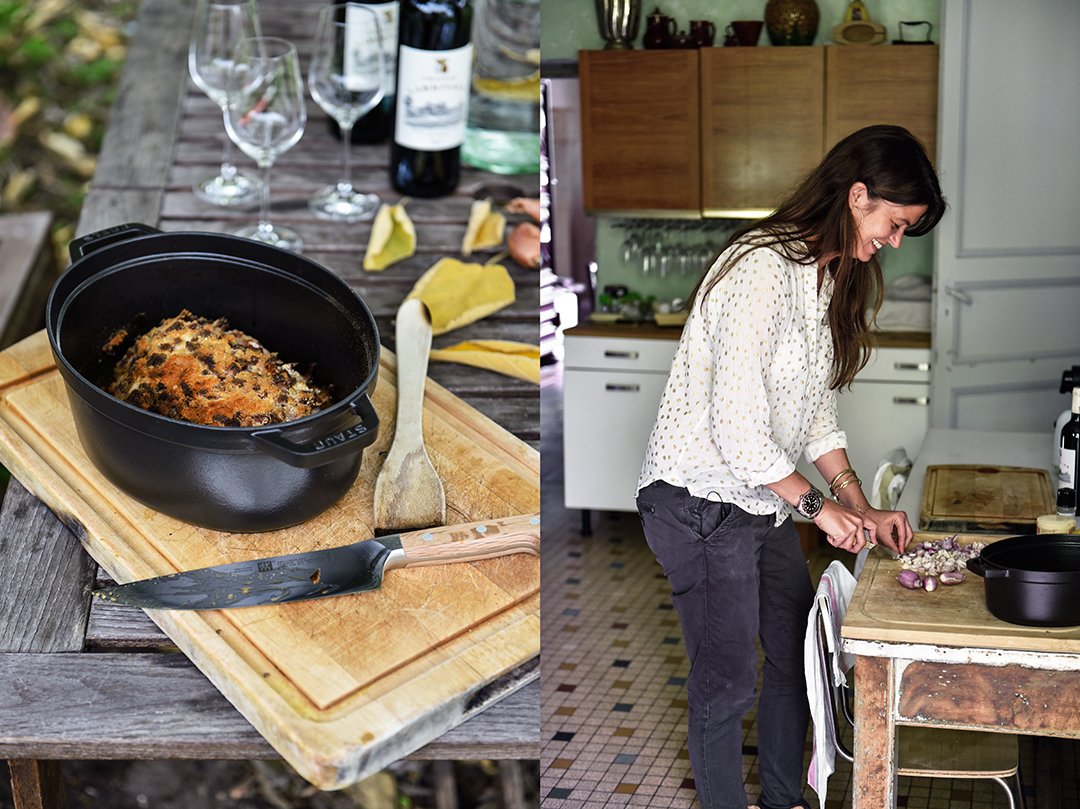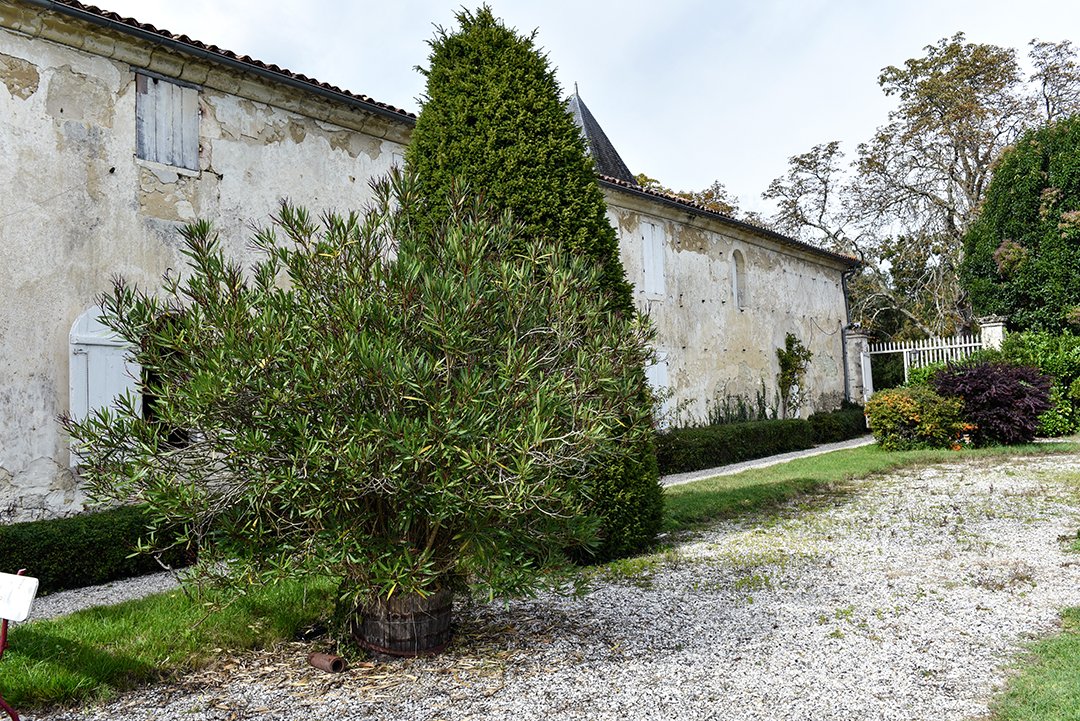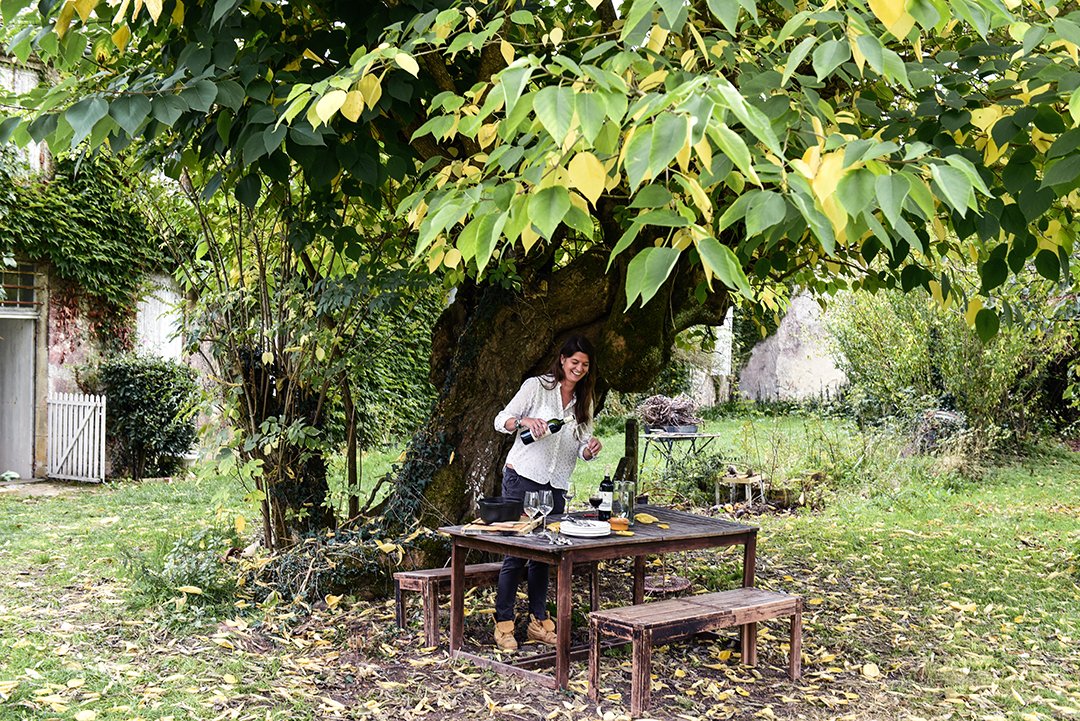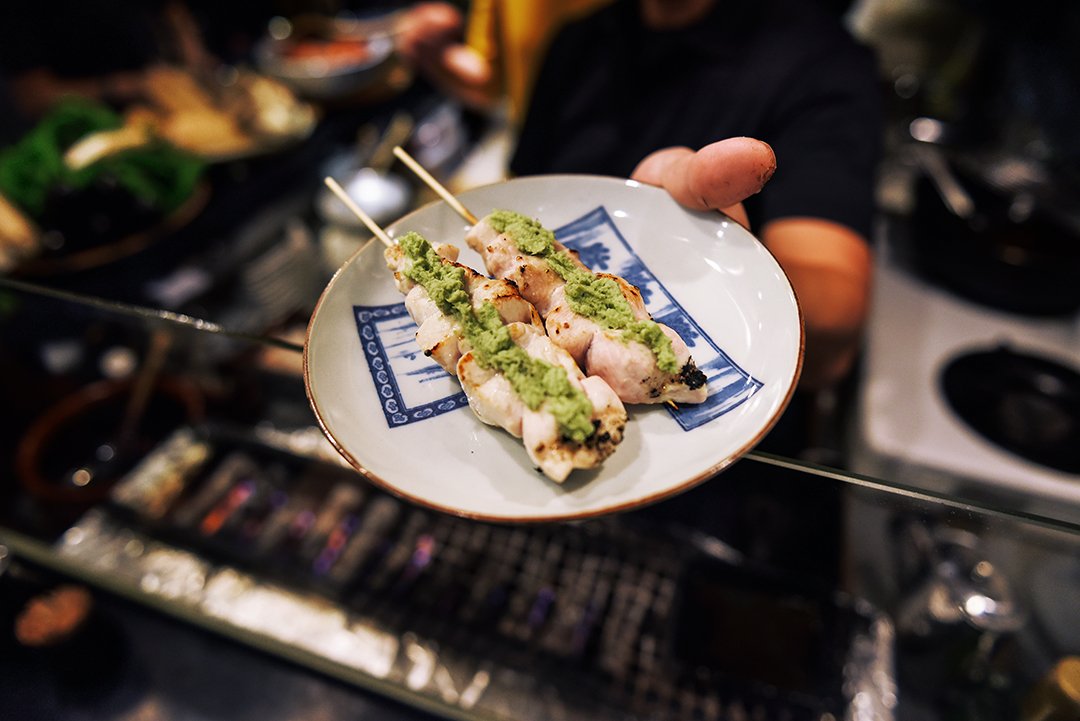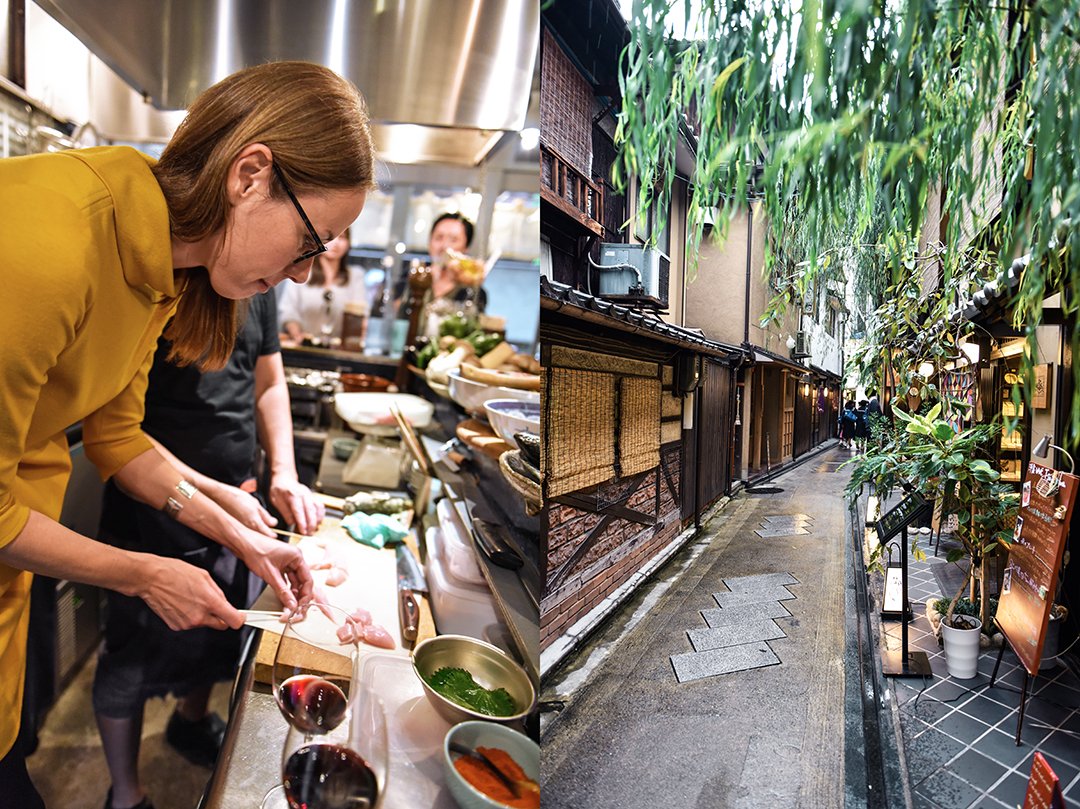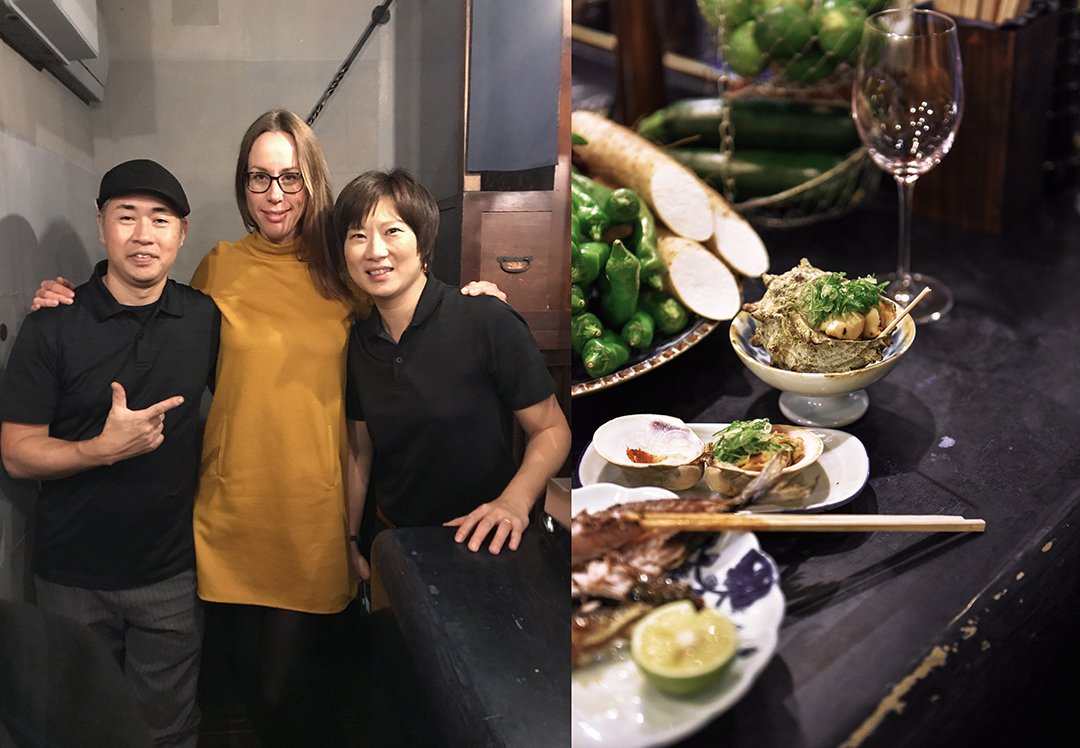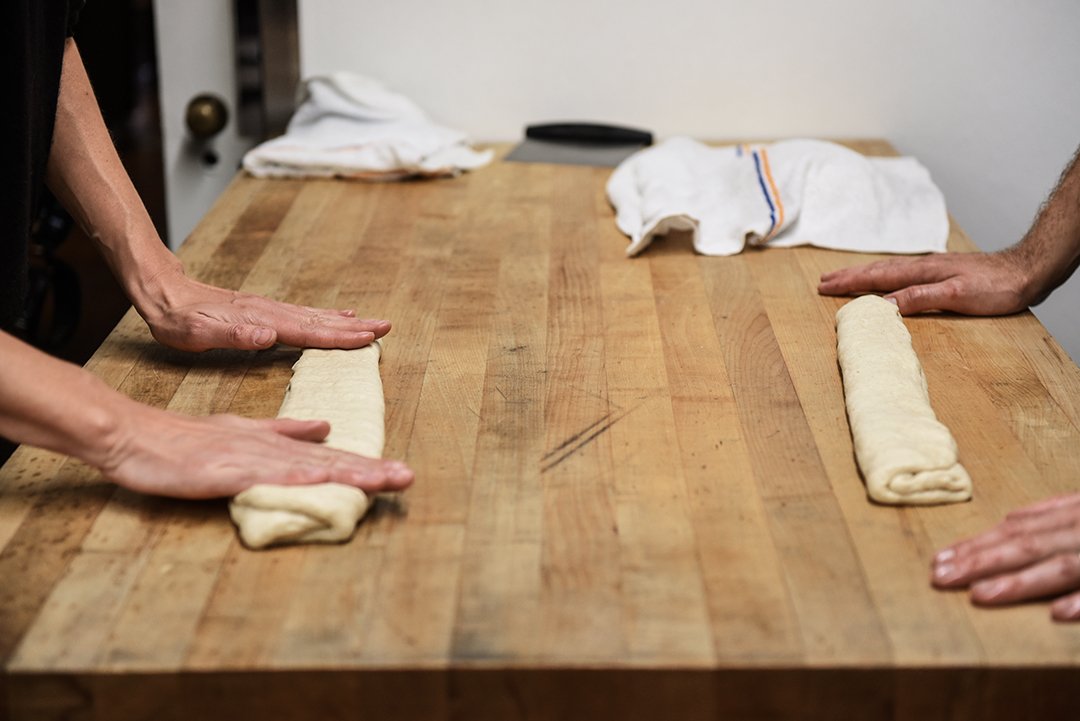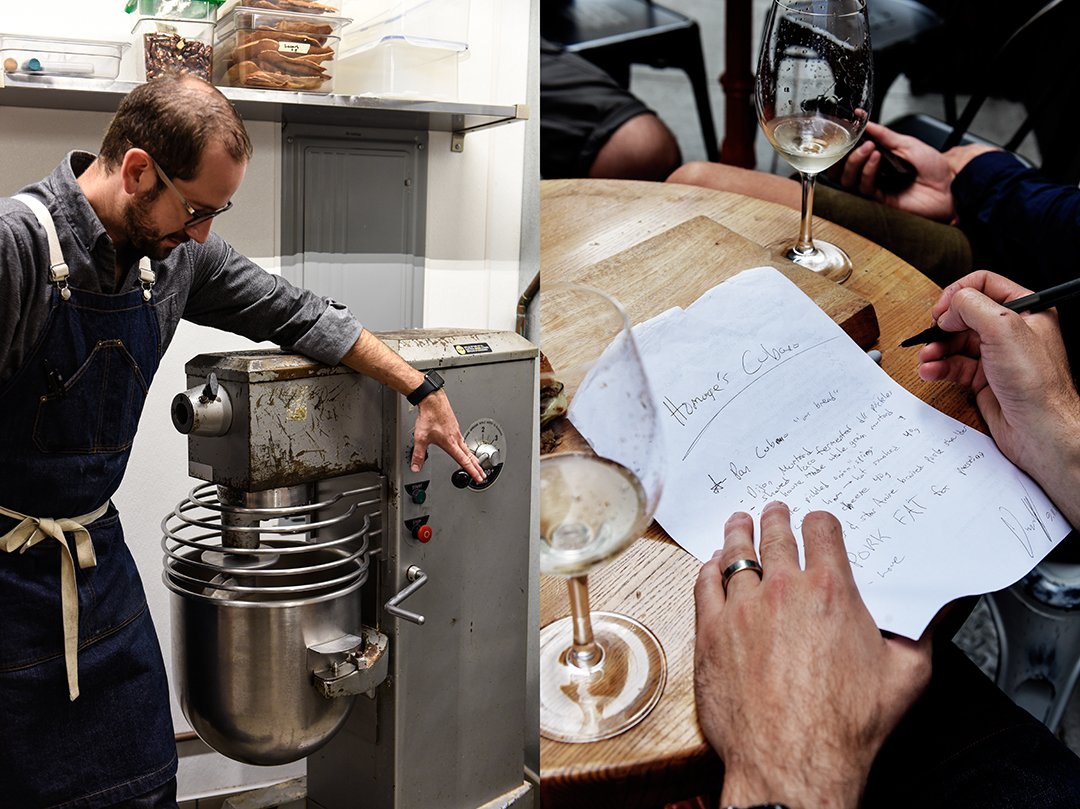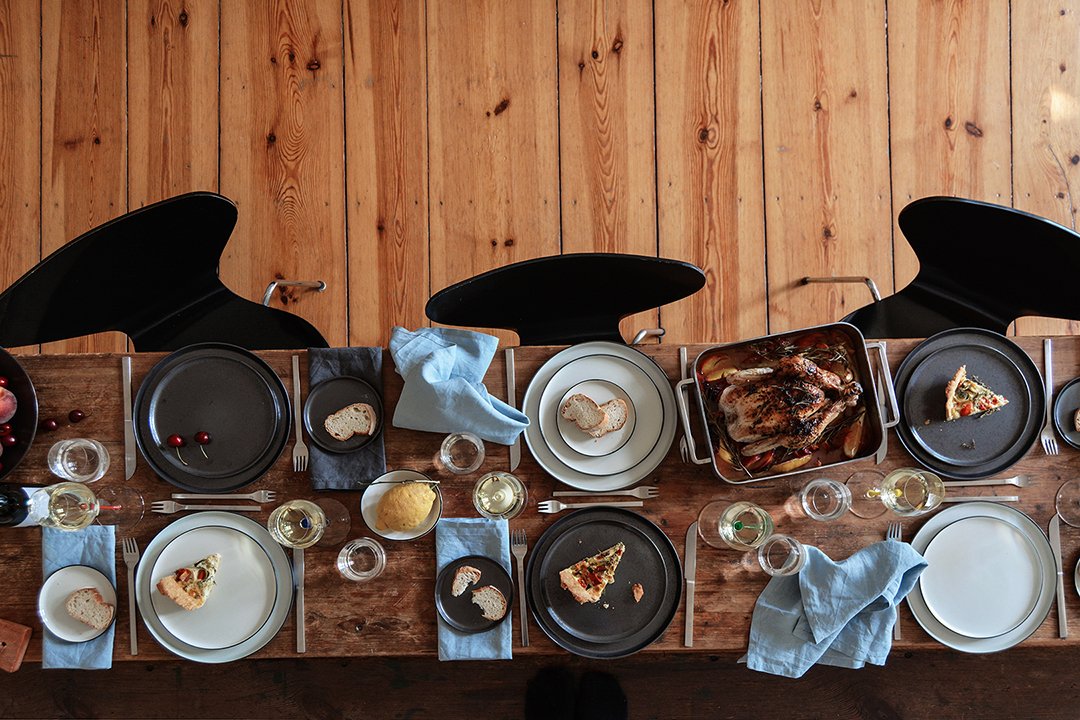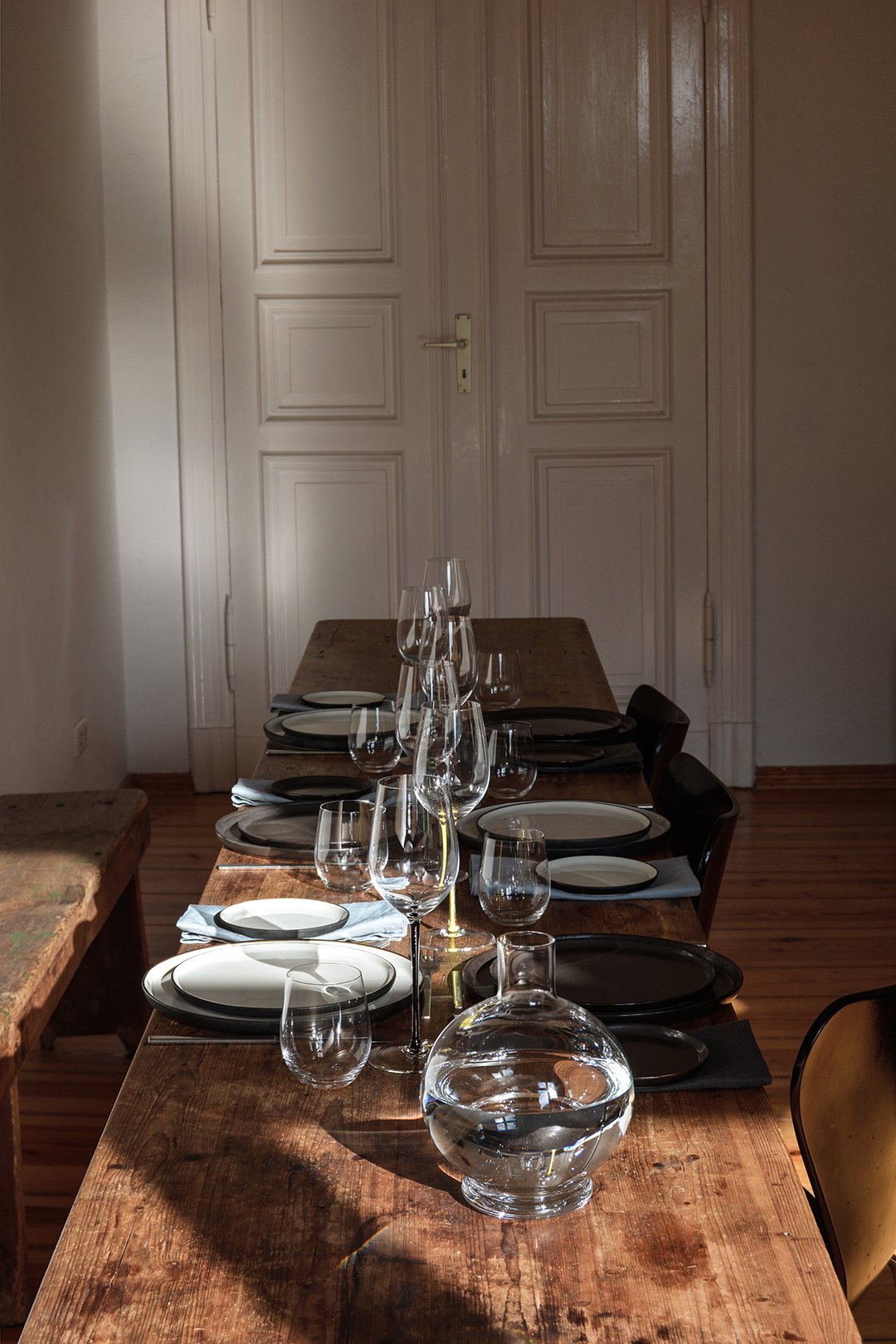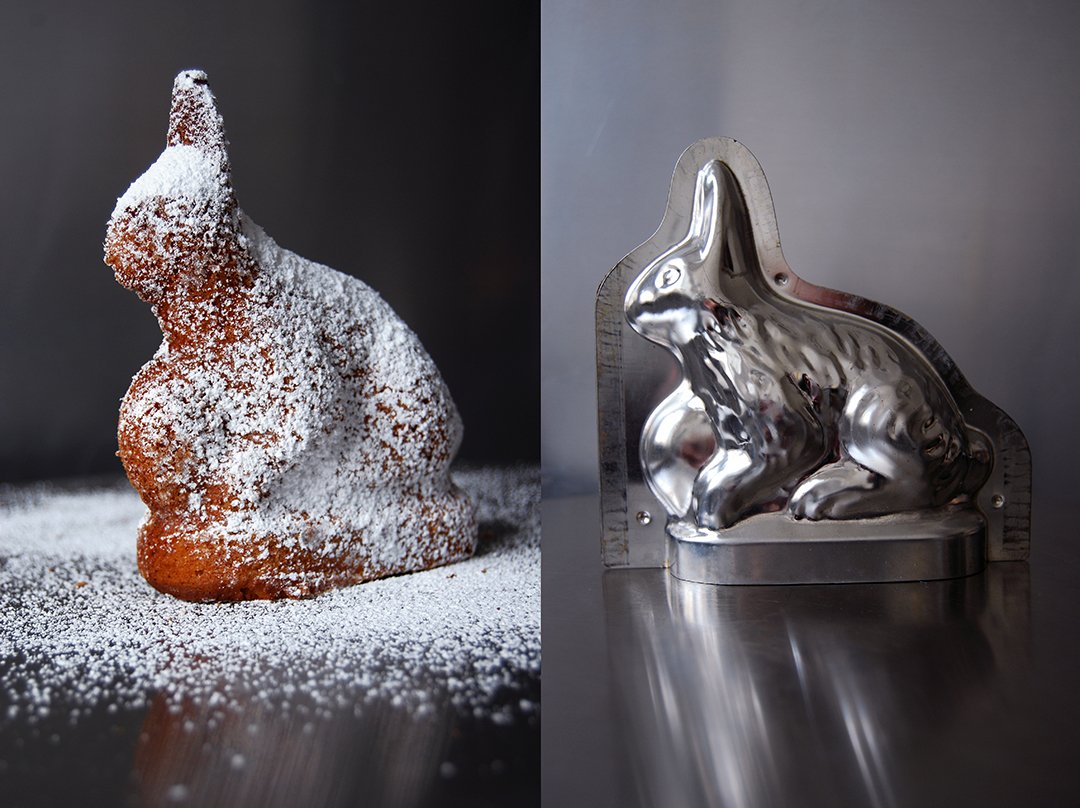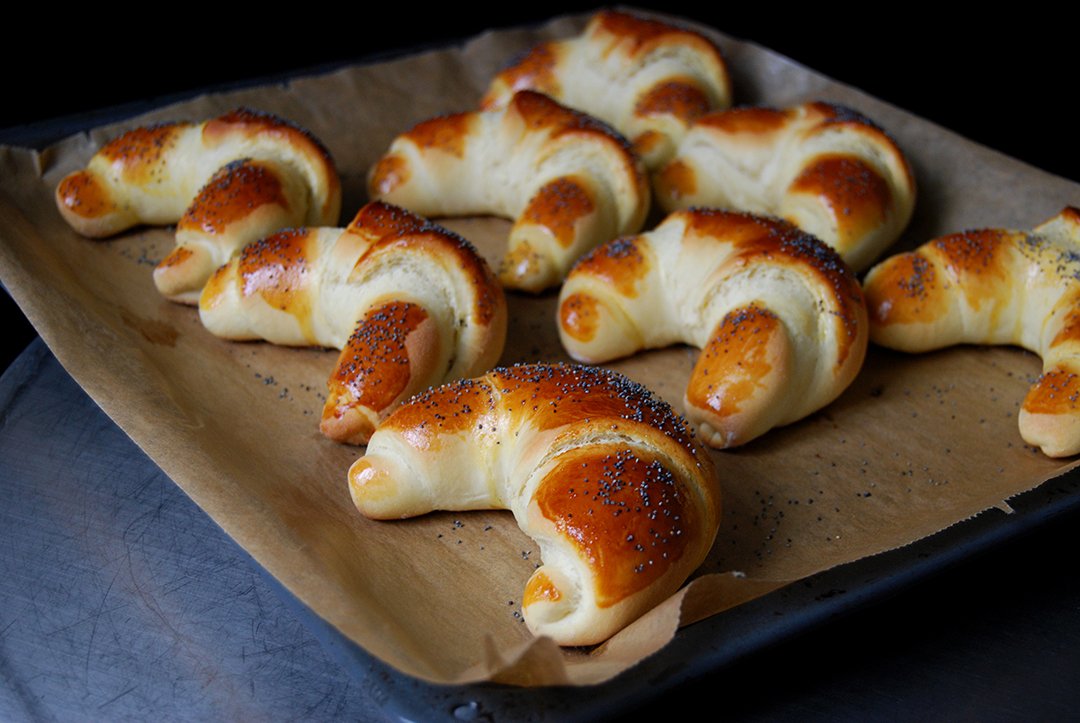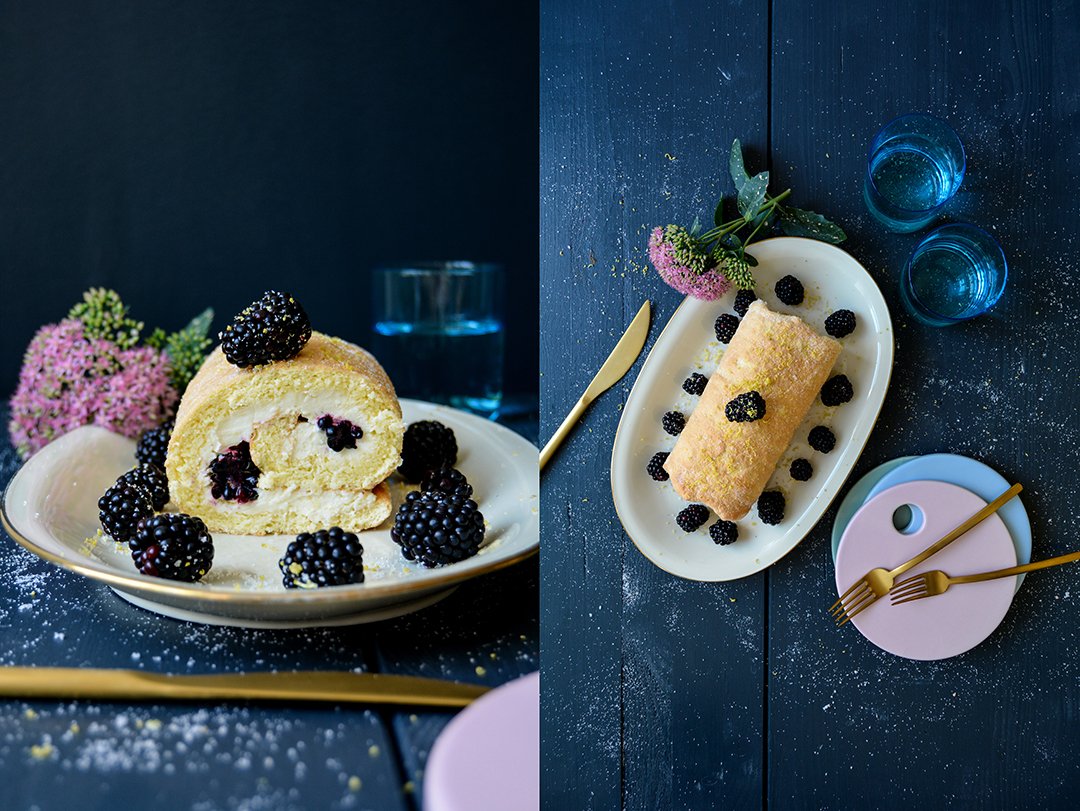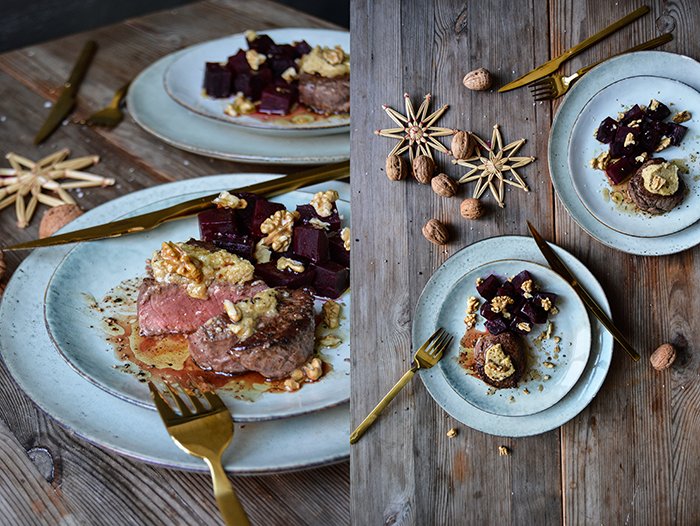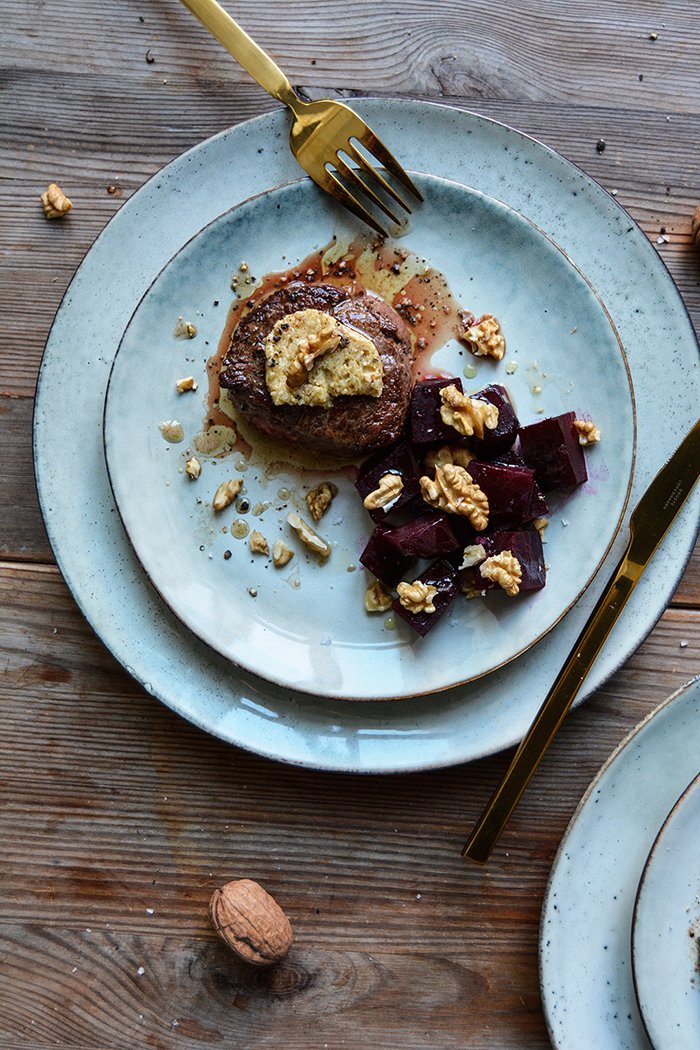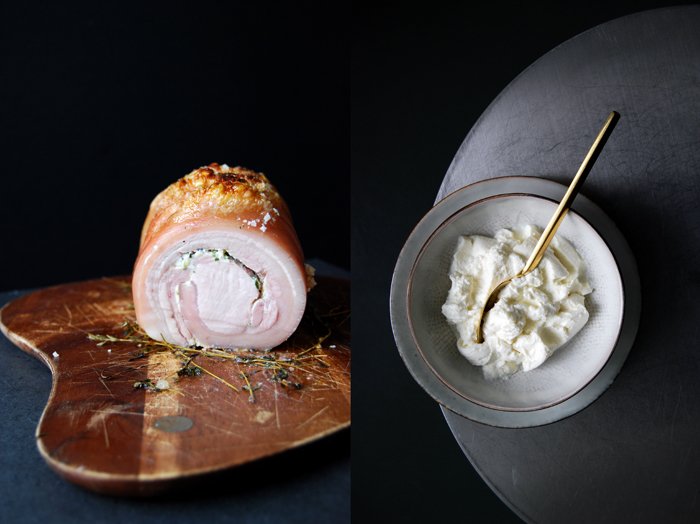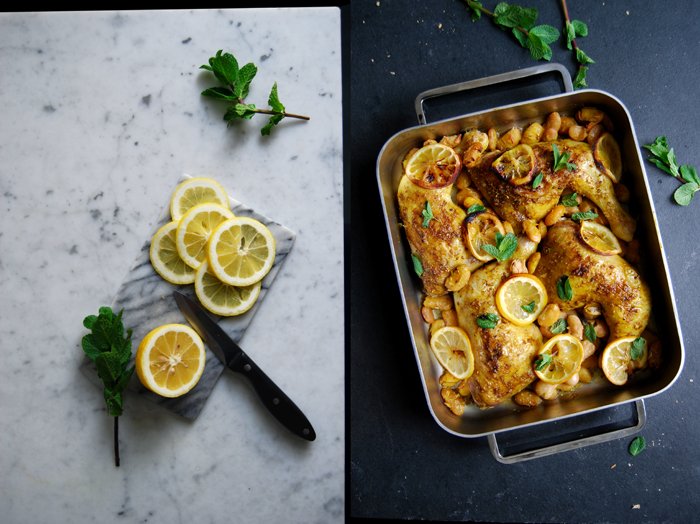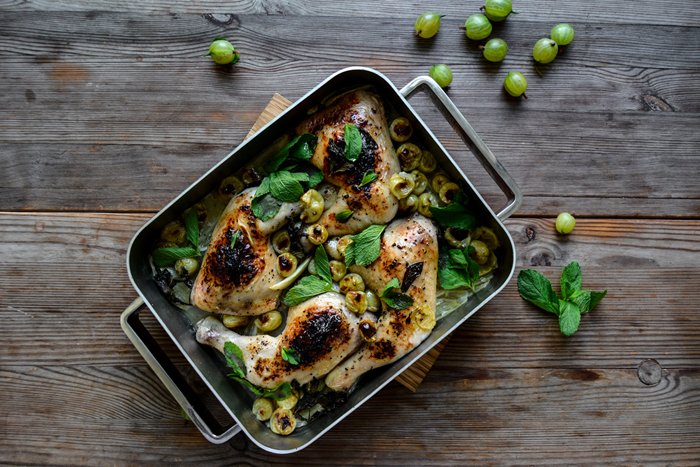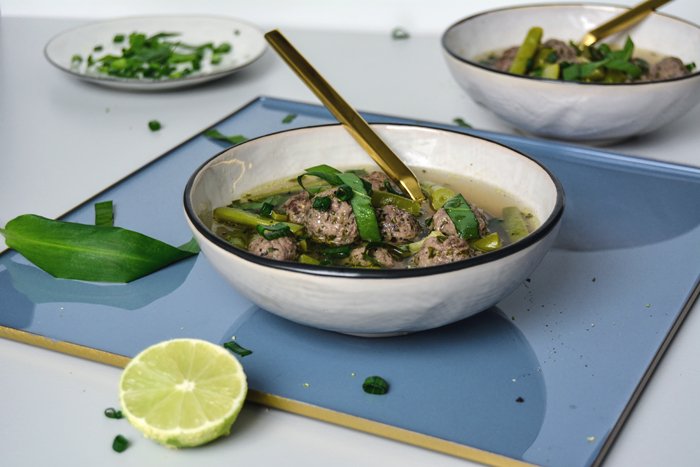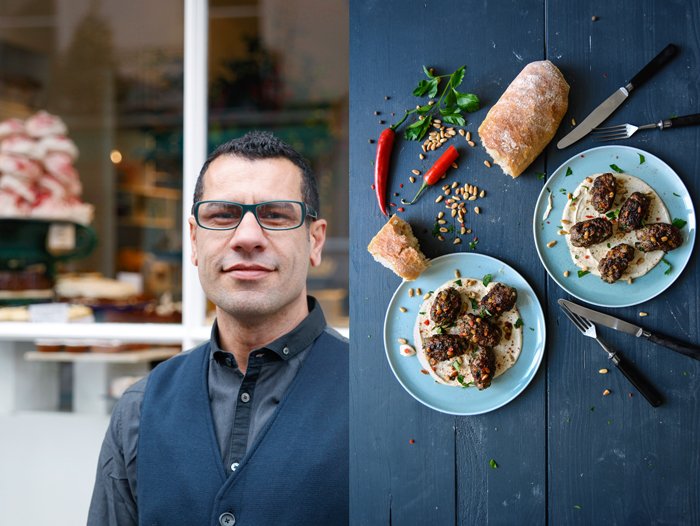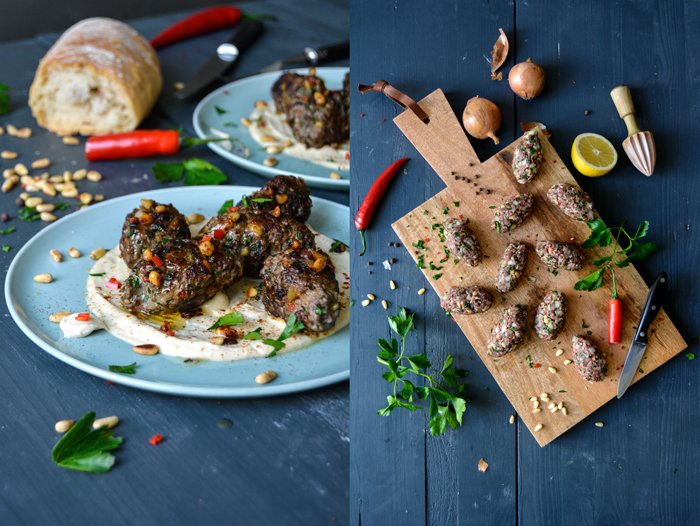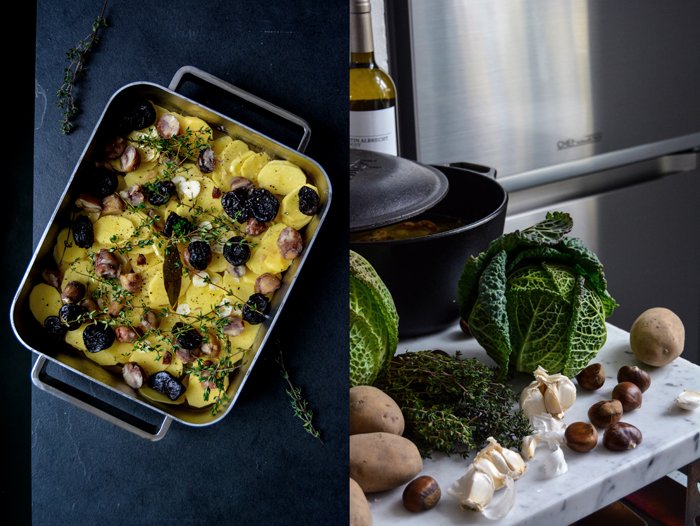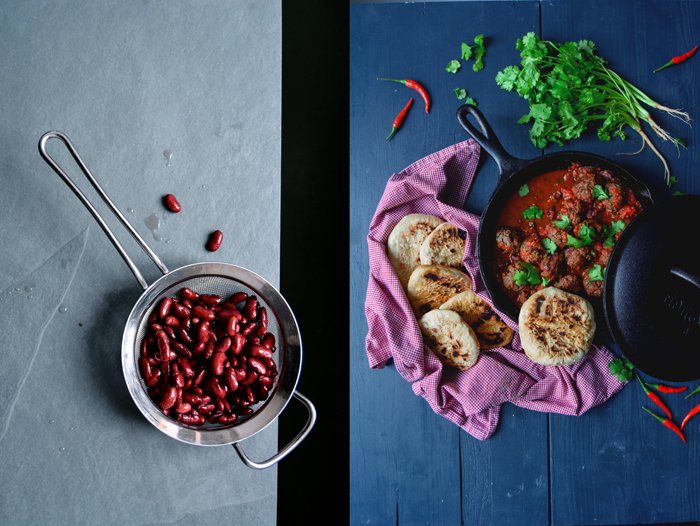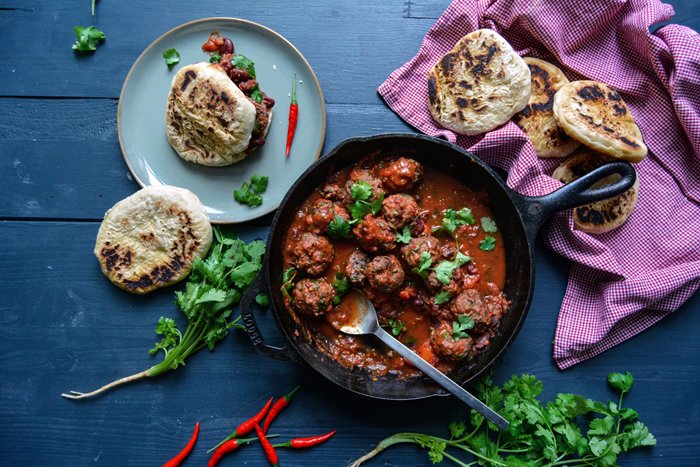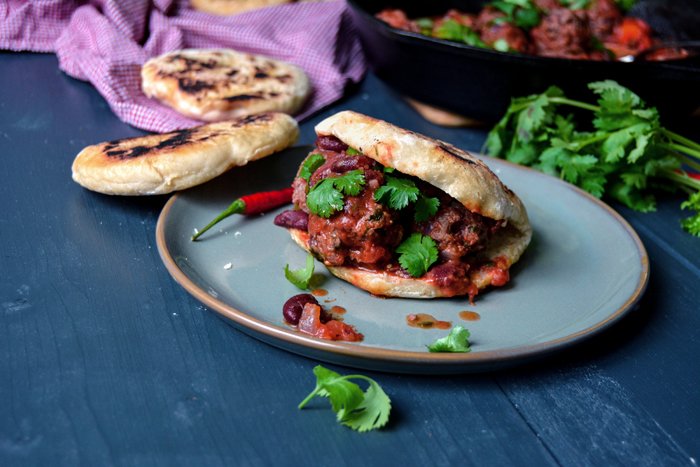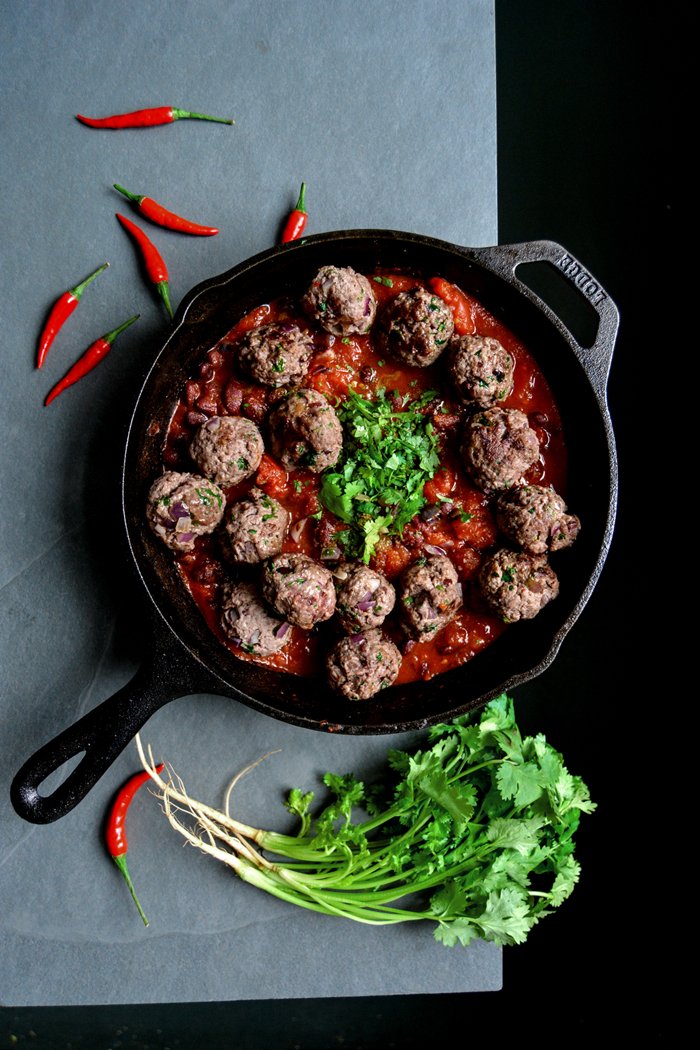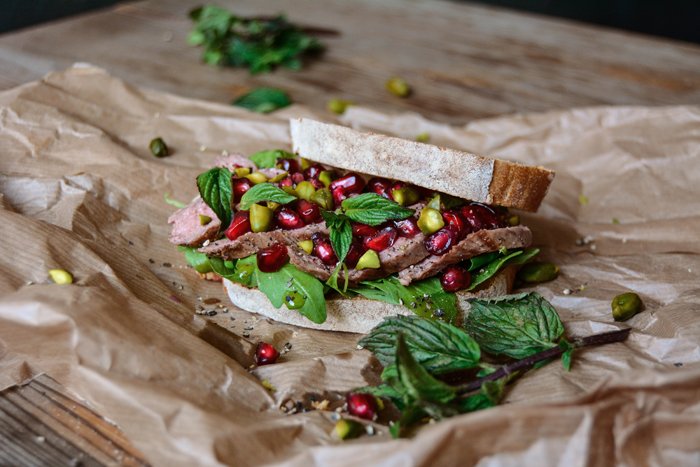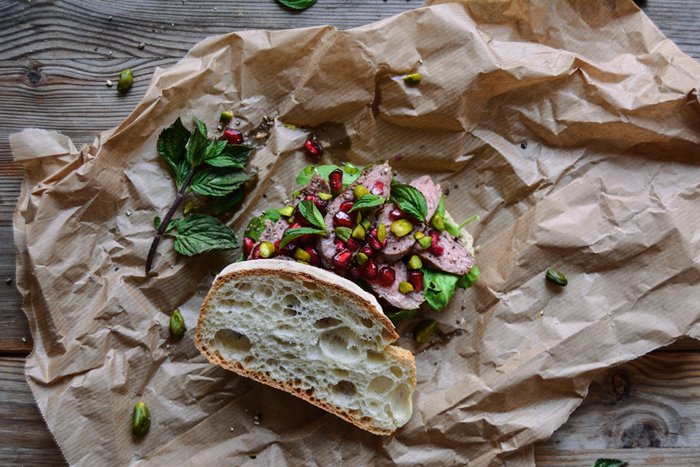NOON is OUT (and on Broadway)!
I just arrived in New York, happy and overwhelmed, on the publication day of this book that means so much to me.
Noon (and NOON) is a gift to yourself, shape that time of the day so that it fits to your own cravings. Make it yours! Use this 1 hour, or these 30 minutes, to make yourself feel good. We plan so much in our lives, every day, we just refuse to often do so when it comes to our own, our very personal needs. And we all need a break but we associate the creation of that break with even more work. So the solution is to find ways (recipes) to reduce that work and time for the preparation of our lunch so that we actually have more time for ourselves when we finally sit down; time to relax and enjoy. I hope NOON can offer you these recipes, but even more, I hope it offers you inspiration to make noon yours.
If you don’t have your copy yet, you can find all the links to order it online here, or support local and buy, or order the book from any bookstore all over world. The chapters in NOON cover Salads, Vegetables, Soups, Sandwiches, Pasta, Seafood, Meat, and Grains & Bakes - so your midday break will definitely be sorted!
Good noon! Meike xxx
The picture of me on Broadway was taken today - right after I had landed in New York - in front of Rizzoli Bookstore where I‘ll be in conversation with Hetty Lui McKinnon on Thursday, September 7th at 6pm - come join us! (For more information, click here)
If you won’t be in New York this week, but if you happen to be in London on October 5th, you can join my conversation with Helen Goh at Building Feasts, hosted by Hanna Geller, with Lallier Champagne and snacks from NOON! (For more information, click here)
Meet In Your Kitchen | Alfredo Sironi's Pizza with Cima di Rapa and Salsiccia
This post is part of my Meet in My Kitchen podcast: How did we get to where we are in life & what does food have to do with it
"Food means a lot, not everything, but a lot. I enjoy cooking more than eating." - Alfredo Sironi
There are two things Alfredo Sironi does all the time: chatting and eating while constantly moving around. When I sat with him outside his Sironi La Pizza restaurant in Berlin's Goltz Kiez, an endless flow of children, neighbors, staff, and guests stopped by to talk to the baker, always having his full attention. When we were at his Sironi il Pane di Milano bakery, at Kreuzberg's Markthalle Neun, he grabbed the pepper grinder from one of the stalls next to him, exchanging it for a piece of pizza and a quick chat with the chef. He nibbles bites of warm salsiccia from a tray while passing by and allows himself a couple minutes to indulge in the pizza bianca that we just baked together, but he won't sit still. Only quick moments of pleasure, before the man moves on to the next venture.
Alfredo says he's a better cook than eater. He blames his childhood. When you basically grow up right in a family restaurant you're always on the run, always looking out for problems that need to be solved and people who need to be taken care of. You have a quick nibble in between chats but you barely sit down to eat. It runs through his family, he says.
"Everything we describe as tradition is fake. There weren’t potatoes in Germany, there weren’t tomatoes in Italy. Noodles, pasta come from China. It’s a cultural process, every day rewritten over and over again." - Alfredo Sironi
Growing up on a farm in Lombardy - between Milan and Como, close to northern Italy's buzzing industrial center yet at the same time, you're surrounded by lush green fields, paddocks, and horses - his life was about his parent's restaurant, his family and friends, and the restaurant's regular guests. Women always played an important role in his world. Although his father started the business, and he's also the most passionate cook in the family, it was Alfredo's mother who kept the motor running smoothly. Due to the region's economic success, the women in northern Italy already ran thriving businesses in the 50s. The cliché of the mother, cooking and staying at home in the kitchen, wasn't Alfredo's reality.
The Sironi family comes from Piedmont, Lombardy, Veneto, and Emilia-Romagna so the family's home cooking mirrors the best of what the four regions bring to the table. Bread and pasta is a staple, always homemade and part of every day's lunch and dinner. Everyone knows how to make it, it's in their blood. And exactly this would become one of Alfredo's greatest assets.
"You can’t prepare yourself for your failure but you have to be prepared for your success. When you start a business, you only focus on avoiding that it crashes. You hope that customers will come, that you can pay your bills, and that it will all work out. But in reality, everything can be totally different, that you are successful. And then the bakery was too small, I hadn’t considered this option in the beginning." - Alfredo Sironi
Until Alfredo moved to Berlin at the age of thirty, he never questioned his cosmos circling around the food and the people that were simply there all his life. It could have been so easy for him to just stay there, to take over the family business at one point, to live this beautiful life in this beautiful place with all the people he loves - but he was hungry for something else. So when Alfredo came up north to move to Germany's capital, he used his memories of the people and the food in Italy, the memories of his daily life, to found his own bakery. Although he studied history in Milan and already saw himself following an academic career, things changed.
In 2010, Berlin's food scene was buzzing and hungry for the new. Carbs are Alfredo's passion. Every day, bread was freshly baked and pasta freshly rolled at his family's restaurant and he helped out whenever a hand was needed. For him, good bread isn't science, it's knowledge and experience. He knew Berlin didn't have anything like the Milan-style bread he grew up with and felt the city would love it yet he was also aware of the risks.
In the end, there was nothing to worry about. It only took a few months for the Berliners to fall in love with the baker and his goods. Right from the start, you could always find Signor Sironi on the annual Berlin's Best Bread lists. His sourdough loaves are praised, his sheet-pan pizza is the reason for ongoing pilgrimages of the carb loving crowds to his bakery in Kreuzberg and to his new pizzeria where the pizza is round. Alfredo Sironi knows his dough, maybe it's as simple as that.
Alfredo shared the recipe for his Pizza Bianca with Cima di Rapa and Salsiccia with me. It's a recipe that I love so much that when I first ate it a few years ago, I came up with my own take on it for the blog. It proves that reducing the toppings for pizza often leads to the best results.
The podcast episode with Alfredo Sironi is in German. You can listen to the Meet in My Kitchen podcast on all common podcast platforms; there are English and German episodes. You can find all the blog posts about these podcast episodes including my guests’ recipes here on the blog under Meet in Your Kitchen.
Listen to the podcast episode with Alfredo on:
Spotify / Apple / Deezer / Google / Amazon / Podimo
On Instagram you can follow the podcast @meetinmykitchenpodcast!
Pizza Bianca with Cima di Rapa and Salsiccia
by Alfredo Sironi
Makes 2 to 3 pizza sheets (using 30 x 40cm / 12 x 16“ baking sheets; if you make 3 sheets the pizza base will be thinner and crunchier, 2 sheets will lead to a thicker, softer base)
For the dough
700ml / 3 cups water, lukewarm, plus more as needed
10g / 1/3 ounce fresh yeast, crumbled
1kg / 7 2/3 cups high gluten wheat flour (German flour type 1050)
20g / 1 tablespoon barley malt syrup (or rice syrup, or molasses)
20g / 4 teaspoons fine sea salt
For the topping
4 - 6 salsiccie (or any other coarse sausage), skin removed, sausage torn into bite size pieces
800g - 1.2kg / 1 3/4 pounds - 2 2/3 pounds cime di rapa, blanched or sautéed (you can also use drained jarred cime di rapa or replace it with broccoli)
500 - 750g / 1 - 1 2/3 pounds drained mozzarella, cut into french fries-shapes
Olive oil
Freshly ground black pepper
In the large bowl of a stand mixer, fitted with the hook attachment, whisk together the water and yeast and let it sit for a minute. Add the flour, syrup, and salt and knead well for about 5 minutes or until smooth; add more water if the dough is too firm. Cover the bowl and let the dough sit for 10 minutes (the ideal ambient temperature is 26-30°C / 80-86°F; you can use the oven or place the bowl on a heater).
After 10 minutes, leaving the dough in the bowl, grab the dough from underneath and fold it on top of itself then turn the bowl by 90° and repeat folding and turning the bowl for 4-5 times. Let the dough sit for 15 minutes then repeat the same procedure once again. Cover the bowl with plastic wrap, or put it in a rubbish bag and close it; you can also use a container with a tight fitting lid. Keep the dough in the fridge for 18-24 hours.
After 18-24 hours, divide the dough in 2 or 3 portions, roll out each portion so that it’s roughly the size of your baking sheet then oil 2-3 baking sheets and arrange the prepared dough on top and cover with kitchen towels. In a warm place, let the dough rise until it roughly doubles in size; depending on the ambient temperature, this will take 30-60 minutes.
Preheat the oven to the highest temperature setting (at least 250°C / 480°F).
Divide the salsiccia, cime di rapa, and mozzarella among the prepared baking sheets and bake for about 10-13 minutes or until golden brown and crunchy. Drizzle with a little olive oil, sprinkle with some pepper, and enjoy immediately!
Meet In Your Kitchen | Maria's Cannelloni al Ragù
This post is part of my Meet in My Kitchen podcast: How did we get to where we are in life & what does food have to do with it
“I think it’s amazing that we need to eat to survive but the way to survive is to do something that is amazing to do, that you can enjoy, that you have the privilege, the luxury, three, four times a day to do something out of necessity that you can enjoy as one of the I would say best things there is in life.” - Maria Gerace
The first time I met Maria Gerace she came to a Saturday lunch at my apartment, we started at noon and parted at 4 in the morning. Mussels, crêpes, late night pasta, and many bottles of vino - that was the perfect start of a friendship that would always circle around food, wine, and long conversations. When I go to Maria's kitchen she makes cannelloni for me - not a couple but 20 (you can find the recipe below, Maria uses crespelle/ crêpes for the cannelloni instead of cannelloni pasta). In her kitchen, she's my Italian mamma who always takes care that my plate (and glass) is never empty!
Maria grew up in a small town in Calabria, close to the sea, right at the tip of Italy's boot and far away from the life she was longing for. She was raised by her grandmother who planted the seed in the young girl's soul that a good life is always connected to good food and to people to share it with.
At a young age Maria was already used to patiently peeling pounds of fava beans in the evening in front of the TV; to making passata in the garage once a year with the entire family, each member having at strict role in the procedure - a hierarchy that only slowly alters with age. Food was never just prepared for oneself, but always shared with the whole family. The famous Sunday tomato sauce enriched with polpettine, a weekly ritual, which smell and taste is so deeply woven into her memory, was a frugal feast in her granny's kitchen that no family member dared to miss. The young ones brought their boyfriends and girlfriends, the aunts and uncles sharing laughs and stories, a constant flow of people pulled to the kitchen of a woman who held everything and everybody together like a magnet.
Once a year the family would gather and go on a 'pilgrimage' to slaughter a pig at a small village close by. The blood would be collected immediately to make sanguinaccio, cooked with cocoa, sugar, and spices it was turned into a rich chocolate sauce that the kids loved. Even for the young ones it was normal that every part of an animal was used, that the whole family would always be involved in every food endeavor, and that there were recurring culinary rituals that marked the flow of the year and made it special. Traditions that everyone was longing for.
Although her curiosity and hunger for life made her leave the south of Italy to study industrial design in Milan, to travel and experience the world and widen her view, to then settle in Berlin with her husband Jan and work as an eyewear designer, Maria's voice always mellows when she talks about her granny, about Italian food, and the sea.
The podcast episode with Maria Gerace is in English. You can listen to the Meet in My Kitchen podcast on all common podcast platforms; there are English and German episodes. You can find all the blog posts about these podcast episodes including my guests' recipes here on the blog under Meet in Your Kitchen.
Listen to the podcast episode with Maria on:
Spotify / Apple / Deezer / Google / Amazon / Podimo
On Instagram you can follow the podcast @meetinmykitchenpodcast!
Cannelloni al Ragù
by Maria Gerace
There are many steps involved in the preparation of this dish, so it makes sense to cook it in larger quantities.Cannelloni freeze very well. Follow this recipe and freeze them (in the baking dish) before (!) baking the crespelle in the oven. After defrosting them you can bake them following this recipe again. You can also prepare the ragù and the tomato sauce a day ahead.The crêpes and béchamel sauce (in case you don't use store bought sauce) should be made the day you finish the preparation and then either bake or freeze the cannelloni.
Makes about 20 crespelle / Serves 7-10
For the ragù (you can prepare the ragù a day ahead)
100 ml / 1/3 cup plus 2 tablespoons dry white wine
Extra virgin olive oil
1 medium onion, peeled and finely diced
1 medium carrot, peeled and finely diced
1 stalk of celery, peeled and finely diced
1 clove garlic, peeled and finely chopped
500g / 17 2/3 ounces ground beef (or mixed beef/ pork)
1kg / 2 1/4 pounds canned whole peeled tomatoes, crushed (or canned crushed tomatoes)
Fine sea salt
Freshly ground pepper
Nutmeg, preferably freshly grated
For the crêpes
600ml / 2 1/2 cups whole milk
1 tablespoon extra virgin olive oil
3 large eggs
225g / 1 3/4 cups all-purpose flour
Nutmeg, preferably freshly grated
Fine sea salt
Unsalted butter, to cook the crêpes
For the tomato sauce (you can prepare the tomato sauce a day ahead)
Extra-virgin olive oil to taste
1 clove garlic
500g / 17 1/2 ounces tomato passata
Fine sea salt
To finish the cannelloni
1 liter / 4 1/4 cups thick béchamel sauce*
Parmesan, freshly grated
Nutmeg, preferably freshly grated
500g / 17 2/3 ounces Provola cheese, cut into cubes
* Here is my recipe for béchamel saucefrom my book '365'
1 liter / 4 1/4 cups whole milk
1 large bay leaf
Nutmeg, preferably freshly grated
Fine sea salt
Finely ground pepper
45g / 3 tablespoons unsalted butter
45g / 1/3 cup all-purpose flour
For the ragù, simmer the white wine in a medium saucepan for 5 minutes to boil off the alcohol and reduce acidity. In a large pan, heat a splash of olive oil over medium-high heat, add the onion, carrot, celery, and garlic, and sauté, stirring occasionally, for about 4 minutes. Add the ground beef and a little olive oil and cook over high heat, stirring to break up the meat, for a few minutes or until the meat is browned. Add the wine and deglaze the pan, using a spatula to scrape any bits and pieces off the bottom, then add the tomatoes. Season to taste with salt, pepper, and nutmeg and gently simmer over medium-low heat for 1-2 hours; the ragù should be thick. Place a large colander in a deep sheet pan then pour the ragù into the colander to drain any excess liquid; for the filling, the ragù needs to be very thick and not runny. Set the sauce collected in the sheet pan aside. Let the ragù cool completely.
For the crêpes, whisk together the milk, olive oil, and eggs then add the flour and a pinch of nutmeg and salt and whisk, using a stand mixer or a whisk, until smooth and well combined. Let the batter sit for about 30 minutes.
For the tomato sauce, heat a splash of olive oil in a large pan over medium heat. Add the garlic and sauté for a few minutes then add the passata, season with a pinch of salt,and cook for 10 minutes. Remove the garlic then let the sauce cool for at least 15 minutes.
For the béchamel sauce, combine the milk, bay leaf, 1/4 teaspoon of ground or freshly grated nutmeg, 1/4 teaspoon of salt, and a pinch of pepper in a medium saucepan and bring to a boil. Immediately take the pan off the heat, remove and discard the bay leaf, and set aside. To make the roux for the béchamel, melt the butter in a separate medium saucepan over medium-high heat and as soon as it’s sizzling hot, whisk in the flour. Slowly pour the hot milk mixture into the roux and whisk until smooth. Simmer on low, whisking occasionally, for about 5 minutes or until the sauce starts to thicken. Season to taste with nutmeg, salt, and pepper and set aside.
To cook the crêpes, spread out 4-6 kitchen towels on a work surface. In a 20 cm / 8“-non-stick pan or cast iron skillet heat 1/2 teaspoon of butter over medium-high heat. Pour in a ladle of the batter, tilting and turning the pan so that the batter spreads evenly and very thinly. Cook the crêpe, flipping once, for about 30-60 seconds per side or until golden. Spread the crêpe on the prepared kitchen towels and continue cooking about 19 more crêpes with the remaining batter, adding a little butter to the pan and adjusting the heat as necessary.
Preheat the oven to 180°C / 350°F.
To finish the cannelloni, spread a little tomato sauce on the bottom of 2 large baking dishes, drizzle with a little béchamel sauce, and sprinkle with a little Parmesan. Season each crêpe with a little nutmeg and sprinkle with a little Parmesan. Place a generous spoonful of the ragù in the middle of each crêpe and top with Provola and a spoonful of béchamel sauce. Gently roll each crêpe into a tight wrap and arrange them tightly, side by side, in the prepared baking dishes. Cover the crêpes with the remaining tomato sauce, the sauce collected from the ragù, and the béchamel sauce, sprinkle with a little Parmesan, and bake for 30-40 minutes or until it’s bubbling and the top is golden brown. Let the crespelle sit for a few minutes before serving.
Meet In Your Kitchen | Médoc's Wine and Food at Château Larrivaux
Fine gravel crackled and crunched under my feet, I felt a little dizzy, still overwhelmed by the beauty that I had just witnessed as I drove through the Médoc. If this region were a minimalist painting you'd see a block of green at the bottom and bright blue with white brush strokes at the top, divided by a gentle curve, the horizon. The vines grow in hard parallel lines, covering valleys and hills, and in between you see the most beautiful châteaux, majestic and elegant, the sturdy walls built of bright sandstone reflecting the sun. The grapes are plump, their juices seem ready to burst their skins at any moment, protected by large leaves hanging over the fruits like umbrellas. The region is praised for its food and wine, but its landscapes seduces your senses.
The gravel that I walked on was surrounded by oleander and boxwood shrubs, shaped like pregnant cones. It was a narrow path framing green lawns in geometric patterns, the garden of one of the dreamiest places I've seen in my life, the park of the mystic Château Larrivaux - home of the inspiring winemaker Bérangère Tesseron and her family. The estate is famous for its outstanding wines, thanks to the women who took care of the land since the château's cornerstone was laid on the grounds of Cissac-Médoc in 1580. Château Larrivaux was always in the hands of women, strong women, like Bérangère and the generations before her, her mother, aunts, and grandmother. They are passionate women, they love the family and traditions, and they taught Bérangère the sense of these values. They taught her to create something special at Larrivaux to pass it on to her own sons one day. "I'm just a little person, Larrivaux exists for five centuries, I'm here to take Larrivaux and give it to the next generation. You have to be passionate to work at the château, without passion you can't work here." There's just one problem, the winemaker has four sons. Her brother has a daughter, so the future will show if it will be female or male.
Bérangère's husband, Basile Tesseron, also comes from a wine dynasty, the equally famous Château Lafon-Rochet, just a couple miles further east. Both of them create the same product, the couple exchanges information about the weather, the harvest, but their businesses are separate. The two estates have different terroirs and approaches and therefore create different wines. "Making wine is all about feeling, intuition. I have more merlot, he has more cabernet, our wines are totally different." Château Larrivaux makes full-bodied wines, round, with a lot of fruit. "When I drink my wine, I want to eat something. It's a wine you want to share and finish the bottle."
Bérangère's life can easily seem perfect, like a picture book ideal, but it's tough, making wine is hard work. She learned to love the weather forecast, she has five apps on her phone. "We always think about wine, looking at the sky, thinking if it will affect the wine, that is stressful, but that's a part of the game." Due to the frost in April 2017, she only produced half the amount of bottles that usually fill the estate's wine cellar.
The family loves food and finds relaxation in their charming countryside kitchen inside the château's thick old walls. The worn kitchen table has been there since Bérangère laid her hands on it as a child. When she chops the vegetables from her garden, she has a beautiful view of the peaceful park. Everything in this room has a story to tell, every polished copper pot, every detail seems to have found its place through the twists and turns of life, not through a plan. The château is a labyrinth of long corridors with creaking floors and more rooms than one can count, full of antiques, velvet covered chairs, old paintings and drawings, wooden toys, and a deer head watching the scenes in the green painted living room for centuries. It's a fairy tale turned into a house.
The Tesserons love the French cuisine for celebrating the simple things, fresh fruits and vegetables, good meat and seafood. "When you have your plate in front of you, you know what you're going to taste, and when you have it in your mouth, you recognize all the different flavors." The kitchen plays an important role in their life, the kids who are 9, 7, 4, and 1 year old, love cooking with their maman, cleaning mushrooms or forming meatballs. They also bake chocolate cake on their own, "I never touch anything, but I watch them," says the trustful mother. And when she makes her famous Sunday classic, the family's recipe for Quasi de Veau de Larrivaux (tender veal roast with crunchy bacon topping), the family gathers happily under the ancient tree in the garden, enjoying food, wine, and life.
In the next months, I’ll share many Meet In Your Kitchen features with you that took me to California, Italy, France, and Japan. Thanks to Zwilling for sponsoring these features for our culinary trip around the world!
Quasi de Veau de Larrivaux
By Bérangère Tesseron – Château Larrivaux
Serves 4-5
1 boneless quasi de veau (veal rump roast), about 5cm / 2 inch-thick, 1kg / 2 ¼ pounds
6-8 shallots, thinly sliced
1 large lemon
Around 150g / 5 ounces bacon, cut into small cubes
A handful breadcrumbs
Ground black pepper
Fine sea salt
Preheat the oven to 180°C / 350°F.
Place the veal in a casserole or baking dish, just large enough to fit the meat. Spread the shallots on top of the meat and cover with the bacon. Squeeze the lemon juice over the meat, then sprinkle with the breadcrumbs. Season to taste with pepper and roast for 50 minutes. Add a splash of water and continue roasting for about 10 minutes or until the meat is tender. Let the meat sit, covered, for about 10 minutes before serving. Cut the meat into thick slices, depending on the bacon's saltiness season with a little salt, and enjoy with a glass of red wine.
Can you tell us a little more about the story behind Chateau Larrivaux?
We found out that we have produced wine since 1850, so it’s one of the oldest properties in the Médoc. And it is unusual that it is run only by women. And I have four boys!
So you have a problem!
I have a problem! But I have a brother who has a little girl, so maybe it will be the little girl.
Was there always active wine production here at the estate?
Yes, it never stopped but a long time ago there was not only wine. We had a lot of cows and it is a really big property, so we had different activities. But wine has been produced since the beginning. For us it is a family tradition. When I was young, on Sundays for lunch, we kids would have a brugnon (nectarine) – peaches with some wine and some sugar, and a little bit of water.
White wine?
Red wine!
To introduce the children to the tradition of wine drinking!
Yes, maybe!
Did you like it?
Yes! (Laughing)
Your husband also comes from a family that produces wine…
It’s totally separate. I have my property, he has his property. But it’s a family story. We work together because my husband and I, we have the same problems when we make wine, so we exchange a lot, but it’s totally separate.
Do you ever keep secrets, if you have a really, really good wine, do you keep it from him?
(Laughing) We don’t have the same terroir so we don’t have the same wine. Making wine is really a feeling, and we don’t have the same feeling. I have more Merlot at Larrivaux, and he has more Cabernet at Lafon Rochet. So the wine is totally different – you can’t do the same thing at Larrivaux and Lafon Rochet.
Do you see each other as competitors?
No, no, no.
Do you talk a lot about the weather, about the harvest?
Yes, every day. I love the weather forecast! It’s awful for me now because I have three or five apps on the iPhone for the weather forecast: “Oh my god, tomorrow it’s going to rain 2mm! Oh no, it’s going to rain 5mm!” We are always thinking about wine and everywhere we are, we are looking at the sky to see if maybe it will influence the vines.
Does it stress you?
Yes, but it’s normal when you work in agriculture. You’re always stressed by the weather. It’s a part of the game.
Have you ever considered producing organic wine?
For me, it’s really important to produce wine without or with little pesticides. Because I have four sons, and we live and spend a lot of time at Larrivaux I think it’s important for my kids to be able to come and run in the vineyard and not to be sick after. But for me, organic wine is not the real issue. It’s a step, it’s a good step but it’s not the final issue. The final issue is not to put any pesticides. When you make organic wine, you add cuivre (copper) or bouillie bordelaise (Bordeaux mixture) which is a product you can use in organic wine but it’s not good for the earth. So for me, producing organically is a good step but it’s not the final issue.
So it’s not important for you to get the certificate, the organic certificate, but you also use methods that are used in organic wine production.
Yes, at Larrivaux we prefer not to use a lot of added substances. Sometimes, if you have to use 1 liter of a certain product, we decide to only use half a liter. We accept that we’re going to have some disease in the vine but it’s not a problem. We’re not going to have lovely vines but it doesn’t matter. We want to make a good product but without a lot of bad substances to protect it.
How old were you when you knew you wanted to continue the tradition, when you also wanted to become a winemaker yourself?
When I was young I wanted to be a doctor. So not wine! I studied law at university for four years. In my fifth year, I decided to go into wine law. My aunt was working at Larrivaux but only on the weekends – it was not her principal job. Basile and I got married at Larrivaux in 2005. We went on honeymoon and when I came back, my aunt had a problem and she couldn’t work anymore. I said ok, I’m studying wine, and I want to work in the wine industry but maybe not at Larrivaux. But Larrivaux needed someone, so I decided to stay for a few months… and I never left!
You love it!
Yes. It’s really a passion. When you work on this kind of property, a small property and everything is old, you can’t sell your wine very expensively. It’s not an expensive wine, so it’s very difficult. So you have to be passionate!
How many bottles do you produce a year?
60,000. It depends on the year. This past harvest, we only produced half of what our production normally is because of the frost in April.
Where can people buy your wine? Do you sell it online on your website?
Not on our website, but I work together with some websites, so you can find it online without any problem.
Is there a certain characteristic of the women at Larrivaux? Is there something, when you look at the women before you – and you are a very strong woman – is there something characteristic where you can say, “That’s a Chateau Larrivaux woman?”
Passion! All of my aunts, my mother, my grandmother – the Chateau Larrivaux Woman is a strong woman. They are passionate, they love their family, they love tradition, and they really give me this sense, the family tradition. I really want to make something with Larrivaux to give it to my sons. I think it’s important. I’m a little person and Larrivaux has been here for 5 centuries. So I’m just here to take care of Larrivaux and to…
…give it to the next generation.
Yes!
And what if the next generation is a boy? Is that ok for you if there isn’t a girl?
I only want for my kids to be happy. If I only have one kid, or no kid who loves wine, it doesn’t matter. At Larrivaux, you have to be passionate to work at Larrivaux. If they are not passionate, they can’t work here. So, we’ll see!
What makes the Chateau Larrivaux wine special?
It’s a wine that’s full-bodied with a lot of fruit. Because we have a lot of Merlot, it’s a round and sweet wine. For me, when I drink wine from Larrivaux, I want to eat something. Which is perfect for me because I love to eat (laughing)! For me, it’s a wine you want to share and to finish the bottle.
What is the essence of French cuisine for you?
For me, it’s simple things: good vegetables, good fruits. You don’t have to add a lot of things. For me, French cuisine is when you have a plate in front of you and you know what you are going to taste. And when you have it in your mouth, you recognize the different tastes of the things you have on your plate.
Do you produce your own fruits and vegetables here at Chateau Larrivaux?
Not all of them, but I do have some vegetables, yes. And it’s not organic – I don’t put anything!
That’s organic!
No, it’s more than organic!
Did food always play an important role in your family? Wine was always there, but the food?
Yes.
Did you always cook with the family?
Yes, yes, yes. I always saw my grandmother cooking, my aunt and my mother too. I always saw people working in the kitchen.
What do you love about the Médoc?
The place itself because there are a lot of places in the Médoc. You have the vineyards, but you also have the seaside. You have the countryside, but it’s only one hour from Bordeaux. There are a lot of things to do in the Médoc, but it’s a secret spot for the moment. So it’s great. It’s good for us. You have a lot of things to do in the Médoc – there’s not only the wine.
If you could choose one person to cook a meal for you, who would this person be and what would this person cook for you?
I can only choose one person?
Ok, two! You can choose two.
Two? Ok. Alors… only two?
Ok three! Starter, main, and dessert!
Ok, my grandmother because she makes a huge sort of gougère – it’s a little choux with some cheese. And she makes a big gougère with béchamel and it was delicious! She’s the only person who made this like that. Then, I choose my husband, because for my birthday he sometimes makes paris-brest and I love the paris-brest! I think it’s difficult to have a good paris-brest. So every year I ask him to make one for me.
And one more person for the dessert?
Maybe my mother, to make some profiteroles – some choux with some vanilla cream inside and some caramel on the top. Like a pièce montée. Here at Larrivaux, not every Sunday, but often, we have some choux with caramel.
Do you prefer to cook on your own or with other people?
It depends on the recipe. For family recipes, I prefer to be with my family: my children, my husband, my mother. For recipes I find in a book, I think it’s really important to share them with someone. Everyone has their fashion, they own way of doing things – I think it’s important to learn and to share.
Do you prefer improvised meals or planned meals?
Improvised. I can’t make a recipe and read everything. I always put a little bit, a little more, a little less…
Did you ever cook a meal that was so disastrous that you said I’m never going to cook that again?
Macarons! I’ve never made good macarons! But I want to learn. There is a dessert in Bordeaux – a strawberry macaron – inside you have whipped cream with vanilla and fresh strawberries. It’s very good!
Thank you, Bérangère!
Meet In Your Kitchen | Taka's Japanese-Italian Fusion Cuisine in Kyoto
Eating at Taka's restaurant in Kyoto feels like having a Japanese feast celebrated with your exuberant Italian family. The place is tiny, it's in a narrow old house tucked into a small secluded alley right in the old city's busy heart. An L-shaped counter separates the celebrated chef from his hungry guests, however, there's a lot of interaction going on. The kitchen is open so you can follow all of Chef Nishimura Takashi's steps, how he grinds the fresh wasabi in smooth circles on a shark skin-covered wooden board (the only proper way to grind the green root as I've learned). The charming chef looks like a versed dancer. He quickly grabs pots and spices from the shelves behind him and then, in the next second, turns around to briefly cook tender chicken sashimi (see the recipe below) in the flames of his little grill; or local beef, or mackerel until it has a crispy golden crust all around. The restaurant's menu is a revelation, sea urchin spinach and tempura lotus root sprinkled with matcha salt are simply divine. Sitting at the counter and enjoying Japanese tapas is a feast in its true meaning: You eat, drink, and share delicious treats with old and new friends.
Kyoto born Chef Taka has lived and worked abroad for years, in Australia, Denmark, and in Italy, in Milan, where he also met his wife Akane. Before they opened their gastro pub in Kyoto, Taka worked at Armani's Nobu Milano restaurant for 10 years, which explains why you can also find wonderful organic Tuscan wines and Mediterranean style dishes on the menu, like the fruitiest eggplant slowly cooked in an aromatic tomato sauce. It's the combination of these two worlds that makes the couple's restaurant in Kyoto so exciting, yet at the same time it's so relaxed. It's the kind of place where you end up chatting with the guests sitting next to you, exchanging stories and dishes, saying Kanpai (cheers) with a glass of red wine in your hand or ending the night with an extensive sake tasting involving everyone in the room.
Taka and Akane love food and people, the people who visit them, their guests, and the people they work with, their kitchen team, but also the suppliers who deliver fresh produce and products of the best quality to this tiny kitchen in the heart of Kyoto. The couple knows all of them personally, they've been working with them for years, most of them coming from the area. Having lived and worked in two food meccas in the world, Italy and Japan, the restaurateurs say that they can only create fantastic food, if the ingredients are perfect, vegetables picked at the peak of their season, the meat coming from animals that were bred and fed with care and respect. Japanese and Italian cooking is similar, both cuisines are very simple and focus on good ingredients, and at Taka, they create a very complete fusion.
In the next months, I’ll share many Meet In Your Kitchen features with you that took me to California, Italy, France, and Japan. Thanks to Zwilling for sponsoring these features for our culinary trip around the world!
Grilled Chicken Sashimi with Wasabi
By Taka Nishimura
Chef Taka uses chicken of outstanding quality, he knows the farmer and he can guarantee the meat's quality and freshness, which is why he can serve this dish almost raw. However, it is highly recommended to cook chicken until it's cooked through.
Serves 2
4 skinless, boneless chicken breast tenderloins, sashimi grade
Freshly grated wasabi
Rock salt
4 wooden skewers
Heat the BBQ.
Cut each chicken tenderloin into 6 pieces and thread onto the 4 skewers. Grill lightly until just done.
Spread the chicken with freshly grated (!) wasabi and season with salt to taste. Serve immediately.
Could you introduce yourself?
My name is Nishimura Takashi. I lived in Italy for a long time, about 15 years. I worked in a world-renowned restaurant called NOBU. And about 2 years ago I moved back to Kyoto, my hometown, to open this small restaurant.
What is your most cherished childhood memory connected to the kitchen?
A cherished memory would have to be, when I was a child, all I watched were shows about food on TV. All I watched were cooking TV shows, and I remember cooking a lot with my siblings when we were small. No one in my family is a cook, I'm the only one who followed a career as a chef. And it was when I was in primary school that I decided to become a chef, it was then that I decided to learn how to cook Japanese cuisine.
Why did you decide to move to Italy and work in Italy as a chef?
Well, I had always made Kaiseki cuisine in Kyoto, I trained in Kyoto Kaiseki for about 15 years. And so then, at that time, Kyoto was amazing, it was a narrow entrance into Japanese cuisine. Now foreigners come here to learn how to cook Kaiseki, but it wasn't like that at all back then. So I wondered why? Japanese people go to Italy to study Italian cuisine, and to France to study French cuisine. So I thought, why don't foreigners come to Japan to study Japanese cuisine? I figured that if that was the case than I wanted to go abroad to teach Japanese cuisine, that's what I felt I wanted to do. And I remember feeling that I'd been a chef for 10 years, I'd learnt a lot in that time and wanted to share my knowledge abroad. So I chose somewhere that had similar food. I first chose Italy because I thought they had a simple way of cooking, and ingredients that had a lot of umami, where Japanese cuisine would be accepted by Italian tastes. And then I worked at NOBU in Italy.Now, in the last 10 years, things changed. Many chefs come to Kyoto and Osaka, Tokyo, studying the Japanese style.
What changed over the years?
That was probably because Japanese chefs became more open-minded. I think one reason is that they began to look outside Japan more. Also, famous chefs wanted to learn more about the mentality behind Japanese Kaiseki cuisine and how to make it. Making each course and slowly serving one small plate after another is Japanese Kaiseki's style. That's how you draw people to your restaurant. You're delicate even when you serve the food, there is even a special orientation for each plate.Every country's cuisine is wonderful, but in Japan it's all about the cut. For example, how sashimi is cut, how the vegetables are cut, how the meat is cut. These cuts create an excellent style of cooking, it's Japanese cooking. It's "katsuru" which means "cuts", which is what gives it such a high aesthetic. Even with sashimi the chefs cut them beautifully. It creates a very unique Japanese aesthetic. The kitchen knife cuts amazingly, every day you need to sharpen your knives, and sharpening them is one part of a chef's training, and I think even foreigners now sense this beauty. That's what I think. Vegetables cut straight, how they're beautifully peeled into hexagons, all kinds of shapes, the manual work that goes into it is amazing.
What makes a good knife? What are the important features of a good knife?
Of course how it cuts, the better it cuts the more beautiful the cut is. Also, how it feels when you hold it. You might have the same knife, but their weights can be different. Or there are knives that suit only you, so Japanese chefs will always buy their own knives. There's also a balance to them. And chefs are using them for a long time, for the entire day, so it needs to not get worn out, it needs to not be a burden for chefs that work for a long time. I think all of these things are considered when knives are made, there's a long history for this. Japanese knives are very particular. Fish is fish, vegetables are vegetables, meat is meat, and we divide them as such, but I think a knife that can be used for all of these is amazing.
What is special about Kyoto cuisine compared to other parts of this country?
I'd say how we compose the meal. There are a lot of difficult things about it but the best thing is how you can enjoy it as you like. Next is how the plates match. There are a number of Japanese meals where you look at the plates as you eat, and there are lots of regions that can make great plates. There's also the matter of gathering good ingredients. Of course each region of Japan has its own wonderful ingredients, but among those, you have Kyoto chefs who will search all over the place to find the best ingredients of the season and who will think of their customers’ faces as they make them. That mentality is unbroken, it's passed down from generation to generation, there's always been this fantastic culture. That's why there are so many things that I think are amazing.In Kyoto, it's really easy to distinguish between the 4 seasons. So when autumn comes you can use autumn ingredients and incorporate their beauty into the food. Kyoto chefs understand this sensibility.
How close is the relationship between you and your suppliers?
That's a great question. You can do that really easily in Kyoto. I've been working… since I was young, so I've been working with suppliers since the beginning. There are fishmongers and vegetable suppliers that I've known for over 30 years. People also introduce me to people they know, like butchers. I've used a lot of connections, and I try to use Kyoto wholesalers as much as possible, and I want to use them more. I have my restaurant in Kyoto right now. We say "local produce for local consumption", and it was the same in Italy. There are ingredients specific to regions and I try to incorporate them in my cooking as much as possible. Now I get requests from the Ministry of Agriculture and other chefs help out too. I want to help revitalise the area, so I get introduced to a lot of different people, and I can get hold of good ingredients. That really makes this job easier.
What was your vision for your restaurant?
I wanted a small restaurant where I could be close to customers sitting at the counter, so they're closer to the chef too. That way everyone can enjoy themselves as they eat, that makes the meal even more delicious. That way people's circle of friends could grow too. I want to make a restaurant like that and introduce everyone to it. And if I get any foreign customers, I want to help give them a place where they can make wonderful memories of Kyoto. I really wish from the bottom of my heart that I can help them make memories.
Thank you, Taka and Akane, for creating wonderful food and memories!
Meet In Your Kitchen | Nik Sharma's Goan Coconut Curry
Spices, aromas, and flavors, and a great portion of tradition paired with curiosity create an exciting mix in Nik Sharma's kitchen. Two worlds woven into his life feed the man's inexhaustible creativity: India and the USA. The first country marks his roots, the land where he was born and raised, the latter represents his life since he was 19 and decided to leave the known behind and start an adventure that lasts till today.
Nik established a renowned food blog over the past few years, standing out from the start, visually and culinarily. A Brown Table is loved for its eclectic recipes and stunning pictures. As a cook, Nik makes you hungry, as a photographer, he creates a unique mood that is captivating, appealing in a way that you want to frame his photograph and hang it on the wall and at the same time go straight to your kitchen and cook and eat the dish. He won Best Photo Based Culinary Blog awarded by the International Association of Culinary Professionals (IACP) two years in a row, quite an astonishing career for someone who only grabbed the camera professionally in his mid twenties.
The fact that his dad was a successful photographer in advertising might have influenced the young man's feel for light and compositions, but Nik says there wasn't that much of an exchange about his work between father and son, he only learned how to use a camera after he left home. But despite his parents' warnings - they told him not to follow their footsteps - the photographer, blogger, and soon to be cookbook author did what many kids do: he did it anyway. His mother worked in hotel and restaurant management, she didn't like cooking, but she had a huge folder full of recipes collected from newspapers and magazines. Nik was fascinated by the world of cooking and baking at an early age, he loved spending hours reading through Indian and western creations, he joined the family's cook in the kitchen, and eagerly followed his maternal grandmother's culinary activities. Her Goan heritage is still very present in many of his own recipes.
Reading the titles of Nik Sharma's recipes makes your mouth water, you can literarily smell the warm aroma of cinnamon, ginger, turmeric, cayenne, and rosewater filling the kitchen: Imagine Masala Chai Pumpkin Cake, Khasta Kachori (Edamame-stuffed Fried Indian Bread), Honey Sage Turmeric Wings, Goan Coconut Cake, Cherry Black Pepper Cake, or his Toasted Pistachio Cake with Blood Orange Sauce. The recipe he shares with us for our Meet In Your Kitchen feature is a vibrant explosion framed in comfort food: Goan coconut curry with tender game hen and aromatic spiced rice.
The cook's approach to food is scientific, Nik has an analytic mind and way to think about dishes, but at the same time he looks at things from a "feminine standpoint", he likes curves and his styling reflects that. "I always think of ballet dancers when I shoot, I envision the dish being a solo dance performer on stage, the light's only focused on the dance and everything else is dark. I always think of dance and curves, I find them very sensual, I find straight lines and diagonals a little harsh. Even if I do introduce them in my composition, you'll see that there's a circle cutting through, like a tangent. Again, I bring math into it because I'm a geneticist by training".
You can be a gourmet, an aesthete, and share the beauty of life, but if you're a critical mind, you know that there's always more to talk about at the table: You can often see Nik's hands in his photographs, to show the technique of a recipe, the preparation and instructions, but also to showcase that there are people from different backgrounds, that there is diversity behind the scenes of a restaurant. Nik says "We don't really see them because they are never brought to the front". There's an imbalance in our society, a hierarchy in the way who works in the front or the back of a restaurant, and in the way people are paid and it's our responsibility to talk about this imbalance and solve it.
Every Sunday you can find one of Nik's beautiful recipes in his A Brown Kitchen column printed in the San Francisco Chronicle (if you don't happen to live in the Bay area you can also grab some inspiration online on the newspaper's website) and on October 2nd, 2018, his first cookbook Season will come out. Reflecting Nik's unique style, the book combines the author's roots and fascination for flavors with his journey as an immigrant in the US who lived in different states and experienced the culinary heritage from people coming to this country from all over the world.
In the next months, I’ll share many new Meet In Your Kitchen features with you that took me to California, Italy, France, and Japan. Thanks to Zwilling for sponsoring these features for our culinary trip around the world!
Nik Sharma's Goan Coconut Curry
Serves 4
2 medium red onions, peeled
2 cups grated coconut (unsweetened)
1 cup (240ml) boiling water
1 inch-piece (2.5cm) peeled ginger root
1 teaspoon turmeric powder
8 black peppercorns
1 teaspoon cayenne powder
6 cloves
½ teaspoon ground cinnamon
1 tablespoon ghee or olive oil
2 whole garlic pods
2 Cornish game hens, patted dry
Kosher salt as needed
2 to 3 tablespoons chopped cilantro leaves
Boiled rice or bread, for serving
Cut one onion into thin slices and keep aside until ready to use. Take the second onion and cut it into quarters.
Place coconut, water, ginger, turmeric, peppercorns, cayenne, cloves, cinnamon, and the quartered onion in a blender and pulse on high speed until smooth and combined.
Melt the ghee in a medium-Dutch oven (or a heavy pot) on medium-high heat. Add the sliced onion and sauté until golden brown for about 8 to 12 minutes. Peel any extra paper off the garlic pods and trim about ½ inch (1 cm) off the top to expose the garlic. Add the trimmed garlic pods to the onion and cook for about 1 minute. Then add the ground coconut spice mixture into the pan and cook stirring occasionally for 2 minutes. Place the two Cornish game hens in the pan snuggly and fill the pan with enough water to just cover the two birds. Increase the heat to high and bring the contents of the pan to a rolling boil, then reduce heat to medium-low, cover with a lid and allow to simmer for about 45 minutes to 1 hour until the birds are completely cooked and tender. Taste and adjust the seasoning with salt. Garnish with the chopped cilantro leaves and serve hot with rice or bread.
Watch my interview with Nik in San Fransisco in September 2017:
Thank you, Nik!
Meet In Your Kitchen | David Kurtz & the best Cubano Sandwich in San Francisco
A food loving friend of mine who lives in San Francisco told me, if you come to California, you must (!) meet David Kurtz and visit his Homage restaurant in Downtown. I trust my friends, especially when it comes to food, so I emailed David that same evening, not only receiving an answer that he was looking forward to cooking with me, but also to showing me around his hometown and spending a day together to give me an insight into his charismatic city that has so many faces.
The first thing that people think of when it comes to San Francisco is the Golden Gate Bridge and – if you talk to bread obsessed foodies and Instagrammers – the famous Tartine Bakery. The bakery is a temple for baked goods that one shouldn't miss, the bridge, however, is a moody diva that is hard to catch. San Francisco is a place of extremes when it comes to the weather, a fact that I had totally forgotten about and wasn't really prepared for. You can be spoilt with blue skies, sunshine, and summery temperatures in one second, then walk two blocks and be swallowed by mist and end up shivering in the cold. It was a bright afternoon as we drove to the famous bridge, impatient excitement in our faces ready to capture its majestic elegance, yet to find ourselves fighting against thunder and rain as we arrived was sobering. Needless to say there was no bridge in sight, but seeing the clouds climbing the hills behind the bridge and filling the bay with darkness and lightning faster than one can run was just as impressive.
The day we met David offered this exact spectrum of experiences, in food, weather, and sceneries. We started at the chef's wonderfully relaxed, casual, yet elegant Homage restaurant, a culinary gem tucked in a little side road surrounded by high office buildings. It's a tranquil oasis in the center of the vibrating buzz of this city. Sitting outside at one of the bistro tables, with a glass of Californian wine in my hand and a scrumptiously dripping sandwich on a chopping board right in front of me, was one of the best memories that I took home with me from this trip. This sandwich, the Cubano, is truly addictive and so famous that, according to David, it would cause a riot if he ever dared to take it off the menu. Imagine the best homemade baguette brushed and grilled in tasty pork fat (homemade lard), filled with succulent anise braised pork shoulder, hot smoked ham, Swiss cheese, mustard, dill pickles, and even more pork fat. It's the best sandwich I ever had in my life.
But before I could take a big bite of this unforgettably delicious lunch snack, David and I met two days before to prepare the dough for the bread in his kitchen and give it time to rise and rest. It was a Saturday morning and David and his lovely assisting, coordinating, and always helping 'right hand' Anja welcomed me and my film crew at Homage. David has the kind of voice and aura that calms you down immediately, whatever instructions he gave, I gladly obeyed and followed, enjoying to learn how to make the restaurant's beautiful baguettes and also being introduced to David and Anja's friends and suppliers at the utterly stunning Ferry Plaza Farmer's Market. The market is their weekly shopping date, it's a mecca for fresh produce. I've seen quite a few markets in my life, but this one is impressive, not only due to its setting right at the bay, but first and foremost because of the freshness and variety of the produce that the farmers offer at their stands:
Tomatoes kissed by the sun in all shapes, sizes, and colors; a sea of polished peppers; fragrant bundles of cilantro, basil, bay leaves, mint, and purslane; farmers' stands specialized in beans (like Romano and Cranberry Beans), or figs, 8 or 10 different kinds of figs gently laid out in baskets, or a stand putting the spotlight on plums, peaches, and nectarines, run by a woman with the sweetest smile, Aomboon Deasy. Each person, each stand at the market focuses on the prettiest crisp fruits and vegetables, celebrating its taste and beauty. One stand in particular left me in an awe: piles of Baby Curly Kale, Red Russian and Dino Kale, green and red dandelion, each leaf packed with so much pungent flavor that you want to nibble them straight out of the baskets (which we did).
I found the perfect partner for my market visit, David and I love food so much so that when Anja gave me a beautiful flower bouquet at the market, both David and I started eating the petals. Like I said, when he tells me in his trustful voice "Meike, you can eat this", I'll eat it! But apart from flowers and greens, I also tried the crunchiest spicy kimchi, candy-sweet September strawberries (a luxury for a German girl who's used to a rather short season of this fruit in her own country), ripe dates right off the vine, and the Rebel Within, a savory muffin filled with a soft boiled egg, sausage, Asiago cheese, and spring onions. It was heaven.
After the 'hard work' at the market and in the kitchen, we spoilt ourselves with a little feast at Nopalito, David's favorite Mexican restaurant. They cook delicious organic classics, like ceviche verde, enchiladas de mole con pollo (shredded tender chicken in a deep rich chocolaty sauce), and grilled fish tacos, all washed down with Michelada, Mexican beer with tomato, jalapeno, orange, lime, and salt – which was quite an experience. And after the meal we went for a walk at Golden Gate Park, where we were supposed to forage for forest snacks that one can find in a city if you keep your eyes open, but we chatted the time away. Wrapped in dense mist hanging heavily in the air, I was amazed by the beauty of the ever changing weather and the surprising scenes that it causes, and by David's philosophy and thoughts about the food that he celebrates at his restaurant.
Homage is a very, very special place that I'll always go back to when I'm in San Francisco, because of David and Anja, because of the food that's created and put together by the chef and his team with so much love and attention to detail in every single ingredient, because of this warm atmosphere that welcomes you as soon as you open the heavy door flanked by the restaurant's black facade, an atmosphere that makes you never want to leave again. And if you want to take a piece of it with you, you can grab a jar of the homemade pickles, jams, or a bottle of the wines and beers brought to Homage by David's friends, a bunch of people who find satisfaction in creating products of outstanding quality, just like David. And thanks to them we enjoy treats that taste so good - maybe because of the last ingredient that David listed in the recipe for his Cubano sandwich that he gave me: Love.
In the next months, I’ll share many new Meet In Your Kitchen features with you that took me to California, Italy, France, and Japan. Thanks to Zwilling for sponsoring these features for our culinary trip around the world!
David Kurtz' Baguette and Cubano Sandwich
David mills the grains for the flour that he uses for this recipe himself, however you can also use store-bought flour. It's recommended to work with grams instead of cups, as it's important to use precise measurements for this recipe.
For the baguette
Makes 3 baguettes
519g water (lukewarm)
30g honey
23g SAF instant yeast
875g all purpose flour
60g fresh whole wheat flour
Or if available (instead of the whole wheat flour)
23g hard red wheat flour
23g soft white wheat flour
14g rye flour
157g good quality lard (cold)
20g sea salt
In a large bowl of a stand mixer, using a fork, combine the water, honey and yeast, let it sit for a couple minutes.
In a large bowl, combine all the flours, add to the yeast mixture and, using the hook, mix for a few minutes or until well combined. Add the lard and, using the hook, continue kneading for a few minutes or until the dough has come together. Add a little more flour if it's too sticky or, if it's too firm, add a little (!) more water. Add the salt and continue kneading until well combined and firm. Form a ball, place in a clean bowl, and cover with a damp towel. Let the dough sit in a warm place for 1 hour. Turn the dough completely over releasing built up CO2 and let rise again for another hour, covered with a damp towel.
Line a baking sheet with parchment paper.Punch the dough down, take it out of the bowl, and divide equally into 3 pieces. Roll into smooth balls and let bench rest for 10 minutes under a damp cloth. When fully rested, take one piece of dough and stretch and pull it into a longish rectangular shape (about 14x5.5" / 35x14cm). Carefully flip 1 long side over until it reaches the middle of the rectangle, mind that no air is trapped in the fold. Then flip the opposite long side over, so that you end up with 3 layers of dough folded on top of each other. Using your fingers, pinch the fold all the way to seal well. Gently roll the dough into a long, thin sausage shape, then carefully, but quickly transfer to the lined baking sheet (the pinched fold should be on the bottom side). Continue forming the remaining 2 baguettes and transfer to the lined baking sheet. Cover with a damp kitchen towel, transfer the baking sheet to the fridge, and let the baguettes rest in the fridge overnight, further developing flavor and retarding the yeast activity.
Preheat the oven to 350°F / 175°C (convection setting). Take the baguettes out of the fridge when the oven is hot and ready.
Spray the baguettes with a little water and bake for 6-12 minutes or until the crust is golden, spraying them with water once or twice while baking. Internal temperature of the bread should be 210°F / 100°C when fully baked.
For the Cubano sandwich
Makes 1 sandwich
1 large piece of fresh baguette, cut in half
Dijon mustard
Whole grain mustard
2-3 thin slices hot smoked ham
1.5 ounces / 40g Swiss cheese (one that melts well), thinly sliced
2-3 anise pickled spring onions (or fresh spring onion), thinly sliced
2-3 dill pickles (gherkins), cut in half
5-7 ounces/ 150-200g braised pork shoulder (preferably cooked with anise and citrus), pulled or shredded
Good quality lard (pork fat)
Love, most importantly
Heat two heavy pans, preferably cast iron, over medium-high heat.
Spread the inside of the baguette with Dijon and whole grain mustard. Lay the ham on the bottom and topside of the opened baguette. Arrange the cheese, spring onions, and pickles on top of the ham. Spread the braised pork shoulder on top and close the baguette. Brush one pre heated pan with fresh lard, carefully place the Cubano onto the pan’s surface and brush more lard onto the top of the baguette. Squeeze, or press the Cubano with the other preheated pan directly on top of the sandwich. Cook in the pan, on medium heat, turning once, for a few minutes or until the cheese has melted and the crust of the bread is golden brown and crunchy.
Prepare with love and serve immediately with a large sliced pickle.
Watch my interview with David in San Francisco in September 2017:
Thank you, David!
Meet In Your Kitchen I Maria Sinskey's Culinary Take on Napa Valley
The air is hot and dry in Napa, not the slightest movement, it stands still, wrapping the hills and vines in a magical silence.
We first stopped at a lake, Lake Hennessey, on our way to meet the Sinskeys at Robert Sinskey Vineyards. The scene was too peaceful and beautiful, as perfect as a postcard, the calm water spread out in front of us. A man sat at the sandy bank staring into the bluest sky reflecting on the water's surface, I walked through the swaying grass and my film team made jokes about unseen alligators. Later, Maria Sinskey told me that there are rattlesnakes in the area – sometimes it's good not to know the danger around you and enjoy the moment.
I had seen the wines of the Robert Sinskey Vineyards on the menu of some of the best restaurants in San Francisco, friends praised the quality of their reds and whites, so there were enough reasons to pick this particular wine maker in Napa on my culinary trip through California. But what struck me goes beyond an excellent bottle of wine: it's the Sinskeys' philosophy of making honest wine, their work ethics oblige them to take care of their team, who also hold shares of the company and have been with the wine making couple for decades. Maria and Robert create an environment of togetherness, they cherish people, nature and its gifts, they live a good life and share it with the ones around them.
Robert Sinskey was a photographer in advertising, he's an artist, a philosopher, he never went to a wine school, but maybe that's the reason why he makes good wine. It was a call from his father 25 years ago that changed his life, Sinskey senior needed help at his wine business, and young Rob fell in love with his new obsession for grapes and what you can do with them. He turned the 200 acres of premium vineyards into an organic, biodynamic ecosystem at a time when this step wasn't as popular as today, he was a pioneer, inspired by Rudolph Steiner's 1928 "Agriculture" manifesto. Believing that, if you harvest grapes of outstanding quality, you don't actually have to do much, you can let nature do its thing and trust. In that respect, the Sinskeys feel closer to the European than the American tradition of wine makers. Rob says "wine should not be a quick study, but rather, sneak up on you, seduce you, and evolve in the glass and in the bottle. The goal is to make pure wines of character that pair well with cuisine." And now, his wonderful wife Maria comes in.
Maria Sinskey is an acclaimed chef and cookbook author from New York, she's the cooking soul of the winery. She worked at Michelin starred restaurants in France but when Rob won her heart, she moved to Napa and set up her beautiful open Vineyard Kitchen right in the heart of the winery's rustic stone building, next to the wine tasting room. It's not a restaurant, you can only book and enjoy her exquisite culinary compositions along with a tasting experience (a visit and reservation is highly recommended). Maria and Rob follow the same credo: nature is good, trust her, treat her well and you'll be gifted. Organic fruits and vegetables come from the garden, sheep grazing the vineyards provide wool and meat, beehives pollinate the orchards and bring the most delicious honey to Maria's kitchen.
You could call it an utopia, you could call the Sinskeys dreamers, but decades of creating fantastic wine and food with and not against nature that people praise all over the world, living and working harmoniously in a community with love and passion, and feeling - as a guest - the spark of happiness and dedication jump over, would prove you wrong.
Maria spoilt us like kids with her elegant, deliciously cozy comfort food. Her duck confit was a revelation and her herb marinated rack of lamb with sun-ripened tomato and herb blossom salad tasted just heavenly, thankfully she shared the recipes with us.
Check for visits: robertsinskey.com
In the next months, I’ll share many new Meet In Your Kitchen features with you that took me to California, Italy, France, and Japan. Thanks to Zwilling for sponsoring these features for our culinary trip around the world!
Sun-ripened Tomato and Herb Blossom Salad
________________
Herb Marinated Rack of Lamb with Buttered Green Beans, Roasted Potatoes, and Lamb Jus
By Maria Sinskey
Sun-ripened Tomato and Herb Blossom Salad
Serves 6
Capture the flavor of ripe, just-picked tomatoes at their peak with this simple salad. The sweet tomatoes are gently scented with herb and arugula flowers that provide small bursts of intense flavor. Blossoms can be gathered as herb and arugula plants bolt. If herb blossoms aren’t available use small herb sprigs and leaves instead.
6 ripe garden tomatoes, about 2 pounds, assorted colors and sizes
Extra virgin olive oil
Aged balsamic vinegar
Flaked sea salt
Freshly ground black pepper
¼ cup (a handful) mixed herb blossoms – dill, arugula, basil, chive
Core and slice the tomatoes into ¼-inch / ½-cm thick slices and fork-size wedges. Arrange the tomatoes on a serving platter. Drizzle with olive oil and balsamic vinegar. Sprinkle with sea salt and grind a few grinds of black pepper over. Scatter the blossoms over the top. Serve with simple crisp flatbread if desired.
________________
Herb Marinated Rack of Lamb with Buttered Green Beans, Roasted Potatoes, and Lamb Jus
Lamb Jus (to serve with the rack of lamb, can be prepared in advance)
Yield: 2 cups (470ml)
1 head garlic, cut in half horizontally
4 tablespoons unsalted butter, divided
2 medium shallots, peeled and sliced thinly
1 cup (240ml) red wine
4 cups (950ml) lamb stock
1 medium plum tomato, fresh or canned
1 3-inch / 8-cm sprig rosemary
Kosher salt
Freshly ground black pepper
Preheat the oven to 375°F (190°C). Wrap garlic in aluminum foil and bake until garlic is aromatic, soft and caramelized, about 45 minutes. Reserve.
Heat a 3-quart / 2.8-l saucepan over medium-high heat, then add 1 tablespoon butter. When the butter starts to brown, add the shallot and cook for about 2 minutes until the shallot is wilted and starting to turn golden.
Add the wine and bring to a boil. Reduce heat and simmer until wine is almost dry, about 10 minutes. Add the lamb stock, roasted garlic head, tomato, and rosemary spring. Bring to a boil and then reduce to a simmer. Simmer until stock is reduced by half. Strain the jus into another pan and season to taste with salt and pepper. Reserve at room temperature for up to 4 hours otherwise refrigerate.
To serve: Return sauce to a simmer. Check seasoning, then whisk in the remaining 3 tablespoons of butter until emulsified. Serve immediately.
Herb Marinated Rack Of Lamb
Serves 8
The herb marinade for the rack really perfumes the meat if it is done a day or two ahead of time. The same marinade can be used for many other cuts as well. It is best to remove as many of the herbs and garlic before roasting as they will burn and create off flavors.
2 lamb racks, 8-9 ribs each
¼ cup (60 ml) extra virgin olive oil, plus 2 tablespoon for roasting the meat
4 garlic cloves, unpeeled and crushed
2 4-inch / 10-cm rosemary sprigs, crushed
6 thyme sprigs, crushed
4 rosemary sprigs for garnish
Sea salt
Freshly ground black pepper
Clean the rib bones well by scraping off meat and sinew with a small sharp knife. Cut the racks in half so that each has four ribs. Mix together the olive oil, crushed garlic, crushed rosemary and thyme sprigs in a large bowl. Add the lamb and coat well. Grind some coarse black pepper over all. Wrap well and marinate the racks overnight.
The next day prepare the roasted potatoes first, then continue roasting the lamb.
Preheat the oven to 400°F (200°C). Remove the lamb from the marinade and scrape off as many herbs as possible.
Heat a large sauté pan over medium high heat and add 2 tablespoons of olive oil. Season the lamb well with salt; no additional pepper should be necessary, and sear fat side down until golden, about 7 minutes. Turn over so that the fat side is up and roast in the preheated oven for 17-20 minutes for medium-medium rare (120°F / 50°C internal temperature). Let the rack rest for 10 minutes before cutting. Prepare the beans while the meat is resting.
To serve, cut each lamb rack half into 2 equal pieces, two bones per chop, and serve on individual plates or a platter with the roasted potatoes, beans, and lamb jus.
Olive Oil and Sea Salt Roasted Potatoes
Serves 8
2 pounds yellow potatoes, Yukon Gold or similar
Sea salt
3 tablespoons extra virgin olive oil
3 tablespoons unsalted butter melted
Preheat the oven to 425°F (220°C).
Peel the potatoes and cut into ½-inch / 1.25-cm pieces. Reserve in a bowl of cold water to keep from browning.
Fill a large pot with water and bring to a boil, season well with salt. Add the potatoes and boil for 7 minutes until the potatoes are tender. Drain the potatoes into a colander. Make sure they are very dry.
Place the well-drained potatoes in a large sauté pan and toss them with the olive and butter and additional salt to taste. Place the pan in the oven and roast for 30 to 40 minutes until the potatoes are golden and crispy on the edges. Keep them warm.
Buttered Green Beans
½ pound freshly picked green beans or haricot vert
Salt
3 tablespoons unsalted butter
Trim the stem off of the beans but leave the slender pointed tips. Reserve.
Ready a medium bowl of ice water. Bring a large pot of water to a boil. Add salt until the water tastes of the sea. Add the beans and cook until tender about 3-4 minutes. The thinner and fresher the beans the faster they will cook. Remove the beans from the pot with a pair of tongs or skimmer and plunge into the bowl of ice water to stop the cooking. When beans are cool, remove from the ice bath and let rest in a strainer or colander to drain.
To serve: melt the butter in a large sauté pan and add ¼ cup (60ml) water. Bring to a boil to emulsify, season with salt to taste. Add the beans and toss until heated through. Remove with tongs to a serving plate. Serve immediately.
Watch my interview with Maria in Napa in September 2017:
Thank you, Maria!
Maltese Fennel & Coriander Cheeseburger Toast
A few weeks ago, I received a message from someone excitedly telling me that she visited my 'fennel lady' in Malta. I often wrote about this lovely farmer, on the blog and in my cookbook, and I can't imagine cooking without her aromatic harvest anymore. Every Sunday, she spreads her fennel and coriander seeds on the wooden table at a tiny stand at the farmers' market in Marsaxlokk, a picturesque fishermen's village in the south of my beloved Mediterranean island. It seems like this is what she's done all her life, picking and selling seeds, always with a happy smile on her tanned face. The person who wrote me the email did what I always do in summer: she bought bags of fragrant seeds to fill the spice box in her pantry.
Malta is the reason why fennel became so prominent in many of my recipes. It grows wild all over the islands, the plants dig their sturdy roots into every patch of soil they can find. I guess its abundance is one of the reasons why you can find fennel in many traditional dishes in Malta's Mediterranean cuisine - and its wonderful sweet taste of course. If you visit the small local restaurants, you often find baked fennel potatoes as a side dish on the menu.
When Leerdammer asked me if I'd like to create a recipe with their new Toast and Burger Cheese, I didn't think twice. I love a good cheeseburger. I live in Berlin, a city where new burger joints pop up at every street corner like mushrooms. Although I like to try a new spot once in a while, I still have my favourite place when my meaty cravings creep over: The Bird. I always go for a perfectly cooked steak burger topped with a slice of Swiss cheese. However, in my own kitchen, I'm a little more experimental.
Leerdammer's aromatic cheese tastes slightly sweet and it melts on top of a warm, juicy burger like butter. The cheese has a fine taste, but it's not shy, it can easily take a generous amount of warming spices stirred into the burger mixture: fennel and coriander seeds, alongside lots of garlic, fresh parsley, and spicy black peppercorns crushed in a mortar. I felt inspired by the famous Maltese sausage, which is coarse, rough, and so tasty. It features all the spices that you can find in my burger. When it comes to flavour, Malta's traditional sausage is one of the richest and most delicious I know. And what works in a sausage, can't go wrong in a burger.
The burgers are bedded on a thinly sliced fennel bulb that adds freshness and crunch, a few red onion rings and arugula (rucola) instead of a lettuce leaf brings a sharp note. Usually, I prefer to buy my cheese in one piece, but when it comes to cheeseburgers, I don't mind working with sliced dairy products. This way it looks like a proper American style burger, one with a Mediterranean make-over. You could pack the whole thing in a bun, but what about trying something new and layering it between two thick slices of toasted white bread? And instead of using the toaster, make use of the burgers' buttery cooking juices and crisp the bread in the pan.
Thank you Leerdammer for inspiring me to make a Maltese cheeseburger toast. You can find more Toast & Burger recipes celebrating regional treats here.
Last year I created a few scrumptious sandwiches together with Leerdamer, here are some of my favourites:
Maltese Fennel Cheeseburger Toast
Makes 4 burgers
For the burgers
minced meat (beef and pork) 500g / 18 ounces
dry breadcrumbs 30g / scant 1/4 cup
organic egg 1
garlic, crushed, 2 large cloves
fresh flat-leaf parsley leaves, chopped, 1 medium bunch
fennel seeds 1 tablespoon
coriander seeds, crushed in a mortar, 1 tablespoon
black peppercorns, crushed in a mortar, 2 teaspoonsf
laky sea salt 1 1/2 teaspoons
butter, to cook the burgers
olive oil, to cook the burgers
To assemble the burger toast
fresh white loaf, 8 thick slices
medium fennel bulb, cored and very thinly sliced, 1
medium red onion, cut into thin rings, 1
Leerdammer cheese (or another aromatic cheese that melts well) 4 slices
arugula (rucola), a small handful
olive oil
fennel seeds, crushed, for the topping (optional)
For the burgers, in a large bowl, using your hands or a stand mixer, mix and knead the minced meat, breadcrumbs, egg, garlic, parsley, fennel seeds, coriander seeds, pepper, and salt until well combined. Shape the meat mixture into 4 thick burgers.
In a large, heavy pan, heat 1 tablespoon of butter and a generous splash of olive oil over high heat. Reduce the heat to medium-high, add the burgers, and, turning them 2-3 times, cook until medium rare. You might have to turn the heat down to medium after a few minutes if the burgers turn dark. This takes about 10 minutes. Add more oil if the pan becomes too dry.
Transfer the burgers to a plate (cover them with a lid), leaving the fat in the pan, and turn the heat up to high. Add the bread slices to the pan and toast each slice on just one side until golden and charred at the corners.
To assemble the burger, lay a slice of bread on a plate (toasted side facing down) and lay a few fennel slices and red onion rings on top. Arrange the warm burger and a slice of cheese on top, then finish it off with some more onion rings and a few rucola leaves. Drizzle with a little olive oil, sprinkle with some fennel seeds, and close the sandwich with a slice of bread (toasted side facing upwards). Squeeze and enjoy!
Lemon Butter Roast Chicken with Peaches and Rosemary
Roast poultry is always a feast. Nothing beats a whole roast chicken, the skin golden and crisp, the meat succulent and tender. And when it comes to seasoning the chubby bird, there are no rules to obey. Sweet or sour, fruity or veggie-focused, spiced-up or plain, a chicken can deal with everything. Lemon butter sounds fresh, tastes fresh, and turned my chicken into a perfect summer lunch. Italian peaches lend juice and fruitiness, a little sweet, but not too much, and rosemary brings in woody tones. Seeing as we're talking about feasting, there had to be wine on the table. The bird didn't necessarily need it, but my mood called for a German Riesling, chilled, fresh, and fruity.
If you love wine, here's a little experiment for the next time you open a bottle: choose a good bootle of white or red wine and pour it into three to five different wine glasses. You can also go for champagne, if you're in the mood for bubbles, but take your time and consciously taste the wine, its complex tones and colours, revealed by the dimensions of each glass, its shape, volume, height, and curves. If you have three glasses, you'll taste three variations of the same wine.
My mother - who loves wine at least as much as she loves food - introduced me to this kind of wine tasting in my early twenties. She has a huge crystal glass collection handmade by 260 year old glass maker Riedel, not only for white, red, and sparkling wine, but also for different regional wine and grapes. The taller Bordeaux glass, the rounder Burgundy that opens at the mouth, the elegantly shaped Syrah glass, they all bring out the best, the typical characteristics of these wines. That doesn't mean that a fine Chablis can't be enjoyed out of a glass that was made for a Riesling, but it might miss certain nuances that give it the final touch, the magic that goes beyond words.
After my first lesson in the art of wine glasses, I decided to follow my Mama's food steps and invest in a basic collection, my first machine-blown Riedel glasses. My budget was a bit more limited than my mother's, I focussed on shapes that work well for various grape varieties. Riedel's Rheingau glass, for example, is quite an allrounder, it flatters crisp and fruity whites like my beloved German Grauburgunder (pinot gris), but I also found out that a bubbly Crémant d'Alsace doesn't mind this shape either - in case a Champagne glass isn't at hand. When it comes to the reds, I'm a fan of body, weight, and depth. The classic Bordeaux shape goes quite well with a few of my favourite wines. These wine glasses were the start of my ever growing collection, which also led to ever growing kitchen shelves, but that's another story.
Falling for wine glasses is a passion, it makes sense once you start investing in finer wines. A glass collection grows and changes every year, like a wine collection, there will be losses and new additions. It's alive, like the wines that they're filled with. It's always sad to lose a precious glass, but it's also so exciting to see a new shape added to the shelf.
When Riedel asked me, if I'd like to try out their new Fatto A Mano range, handmade at their headquarters in Kufstein in the western Austrian province of Tyrol, I could already hear my mother's ecstatic voice. Fatto A Mano is a beautiful collection, thin and light at the top, tall and elegant, and it introduces a new feature. Inspired by the Venetian tradition of glass making, a coloured handmade stem is the base of each glass of this collection. The bowl, however, sitting on top, is machine-blown and then fused with the stem, a process developed by Riedel. The colour scheme, including bold yellow, red, blue, and green, and more minimal black and white, adds fun to the table. The art of wine making is a science, but the art of wine drinking is first and foremost a pleasure that allows us the luxury to relax and let go, to taste and just smile at life.
Setting up the table for a dinner party or a weekend lunch feast with friends - especially now, in summer - doesn't need to follow strict rules anymore. We play with the arrangement and mix and match tableware, colours, shapes, and materials. Whatever mood I'm in, the food I choose, but also the way I lay out my table, reflects how I feel. The table is the stage for the feast, where we gather with the ones we love to enjoy a few hours of good food and wine, of closeness and conversation.
Thank you, Riedel, for introducing me to your artful Fatto A Mano collection. It has already created quite a few hours of pleasure at our table - for me and my friends.
In the pictures you see the Riedel Riesling glasses from the new Fatto A Mano range, the stemless Viognier / Chardonnay glasses from The O Wine Tumbler collection, which I used for water, and the perfectly shaped round-bellied Marne wine decanter.
Lemon Butter Roast Chicken with Peaches and Rosemary
You can use leftover meat, sauce, and fruit to stir into warm pasta and sprinkle with fresh basil.
Serves 2-3
unsalted butter 60g / 4 tablespoons
freshly squeezed lemon juice 75ml / 1/3 cup
whole free-range or organic chicken, about 1.5kg / 3.3 pounds, 1
flaky sea salt
ground pepper
medium sprigs fresh rosemary 6
large lemon, cut into 8 wedges, 1
large, firm peaches, cut into 8 wedges each, 3
Preheat the oven to 190°C / 375°F (convection setting or Rotitherm setting, if available).
In a small sauce pan, melt the butter and pour into a medium baking dish, large enough to fit the chicken in. Whisk in the lemon juice, then transfer the chicken to the baking dish and toss in the lemon butter until coated on all sides. Season the chicken with salt and pepper inside and out and lay 2 sprigs of rosemary inside the chicken. Arrange the remaining rosemary, lemon and peach wedges around the bird. Roast, spooning the juices from the pan over the chicken every 15 minutes, for 45-55 minutes or until the juices run clear when you prick the thickest part of a chicken thigh with a skewer. Turn on the broiler (grill) for a few minutes or until the chicken skin starts sizzling, mind that it doesn't burn. Take the chicken out of the oven and let it rest for a few minutes.
Carve the chicken and serve with the peaches and baguette to dip into the juices - and with a glass of chilled Riesling of course.
If you're looking for a starter, or a dish to accompany the roast chicken for an easy lunch or brunch, try my leek, tomato, and thyme quiche or basil ricotta and tomato quiche.
16 Recipes for your Easter Brunch Table
Hunting Easter eggs in the woods was one of my childhood's spring highlights. The sweet smell of blossoms and sunlight in the air, the trees' leaves presenting their most fragile green, and - in a lucky year - I could even replace boots and jacket for shirt and jeans while searching for golden wrapped chocolate eggs and bunnies. I always loved the sprouting energy that comes with the change of season, when winter's shades of grey and brown give way to vibrant colours. Easter is a changing point in the year, there's the promise of summer in the air.
Is there a better way to celebrate this day than gathering your loved ones around the table and treating them to a luscious brunch? Here's some inspiration (click the titles for the recipes) - and there will be two new Easter recipes coming up this Sunday and next Wednesday!
Happy Easter!
Tsoureki – Greek Easter Bread with Aniseed and Orange Blossom Water
My Maltese Winter Sandwich: Pomegranate Chicken, Red Coleslaw & Bacon
We drove down the winding road to the Grand Harbour in Valletta and stopped our cars in front of an old garage. The wooden door must have seen many storms, the green paint faded and the hinges rusted, it's the salt in the air that takes over whatever it gets hold of. Our friends Michelle and Michelangelo came down to the harbour in the cutest Volkswagen beetle the world has ever seen - in baby blue (Michelangelo would correct me and say it's Diamond Blue). Built in 1968, the car only changed owner once, when our friends bought it in 2010 from an elderly lady from the village of Qormi. It was in mint condition despite its 110,000 original kilometres. The previous owner's name was Teresa and she became the eponym of our friend's little love bug, since then, the beetle is affectionately called Terez.
Terez - and her original 1300cc single port engine, a fact that Michelangelo points out with pride in his voice - has seen a lot since she found her new owner: four overland trips, the latest being our friend's honeymoon trip last summer. The three of them (including Terez) attended the Le Bug Show 2016 in Spa and crossed half of Europe to get there. Malta, Sicily, France, Switzerland, Belgium, and Germany added 5,400 kilometres to the tachometer and seemed to have made the bond between the car and its owners even stronger.
Every car needs a check up once in a while, especially when it's nearly 50 years old, and to make it a little more fun, I joined my friends and brought some food and my camera. While Michelangelo laid hands on the tires, I kept mine busy preparing sandwiches for all of us. It's the peak of winter, a time of year when I usually have to confront Berlin's seemingly endless, yawning grey sky for weeks and months, but here in Malta I'm spoilt with sunshine and vibrant colours. This inspired me to come up with a snack as fresh and bright as the Mediterranean world around me. It's a chicken sandwich, the meat tender and thinly sliced, with purple coleslaw and orange wedges, sparkling pomegranate seeds (some of which I turned into a sticky syrup), crunchy bacon bites, and pungent green onions. The composition is rather difficult to eat, but trust me, the pleasure that you'll feel when you taste it, is absolutely worth it. And the solution is simple, just squeeze it until the sticky juices run out of the sandwich and soak the soft bread - it's a heavenly mess.
Thank you Michelle, Michelangelo, and Terez for a wonderful morning in Valletta!
For more delicious recipes and kitchen inspiration, visit Volkswagen's Pinterest community board Food Bloggers for Volkswagen.
My Maltese Winter Sandwich: Pomegranate Chicken, Red Coleslaw, Orange and Bacon
Makes 6 sandwiches
For the coleslaw
cored red cabbage, cut into thin strips, about 230g / 1/2 pound
fine sea salt
yoghurt 5-6 tablespoons
freshly squeezed orange juice
ground pepper
For the pomegranate syrup
pomegranate juice 180ml / 3/4 cup
granulated sugar 4 1/2 tablespoons
For the sandwich
olive oil
chicken breast 400g / 14 ounces
fine sea salt
ground pepper
bacon 6 slices
lettuce leaves 6
white buns (or ciabatta cut into buns), cut in half, 6
oranges, peeled and cut into filets, 1-2
the seeds of 1 pomegranate
green onions, the green part cut into thin slices, 1
freshly grated orange zest, about 1 tablespoon
For the coleslaw, in a large bowl, mix the cabbage and 1/2 teaspoon of salt and, using your fingers, rub the salt into the cabbage. Let it sit for about 15-20 minutes. Add the yoghurt and orange juice, mix well, and season with salt and pepper to taste.
Preheat the oven to 200°C / 400°F.
For the pomegranate syrup, in a saucepan, bring the pomegranate juice and the sugar to the boil and cook over medium-high heat (it should bubble) for about 7 minutes or until it starts to thicken. Set the syrup aside.
In a heavy pan, heat a splash of olive oil over high heat and cook the chicken breast for a couple minutes on each side until golden, you might have to reduce the heat to medium-high. Season with salt and pepper to taste and transfer the chicken to a baking dish. Roast in the oven for about 8 minutes or until the chicken is cooked through. Check with a skewer, only clear juices should come out. Let the chicken rest in aluminium foil for about 5 minutes. Cut the chicken into slices (about 18 slices for 6 sandwiches).
In a large heavy pan, heat a splash of olive oil and cook the bacon for a few minutes on both sides until golden brown and crisp. Transfer to paper towels, let it cool for a few minutes, then break the bacon into pieces.
Divide the lettuce leaves between the bottoms of the buns and arrange the chicken on top, drizzle with a little of the pomegranate syrup. Spread a heaping tablespoon of coleslaw, 2-3 orange filets, and some pomegranate seeds on top of the chicken. Sprinkle with the sliced green onion, bacon bites, and orange zest, and drizzle with additional pomegranate syrup. Close the bun, squeeze, and enjoy!
Fillet of Beef, Walnut Butter and Beetroot and scrumptious menus for Christmas
There are many ways to celebrate the holidays and a lavish feast is my way of creating a festive culinary frame when the Christmas bells start ringing. To fill the bowls and platters with roast and gravy, stuffed duck or goose, dumplings and various cabbage dishes may take some time, but these hours spent in the kitchen are so precious to me, that I gladly dedicate a few days to the preparation of some of the most unforgettable meals of the year.
But I'm honest, this year is different, this year used up my batteries. As much as I enjoy every second of shopping for the ingredients for any meal, cooking, baking, and waiting for my creations to be done, I know when I have to slow down. Even if it's Christmas. A meal isn't special just because of the money that's spent on it, or the time put into its preparation. A meal is special when it sparks a firework in the mouth; when we enjoy smelling it, looking at it, and tasting it so much, that we almost feel like children again. Memories and traditions turn a meal into something greater that sets it apart from our everyday foods. The cookies baked on December's snowy weekends using trusted family recipes are different to the sweets that we stir up during the rest of the year. The beloved duck served on Christmas Eve tastes better when the room is lit up with countless candles and the smell of fir is heavily hanging in the air. I love my traditions and I hold them dearly, but Christmas 2016 calls for a break: lots of time for myself and my loved ones, no plans, no duties, just the pleasure of a little laziness at the end of the year. Cooking is fun and it should always reflect the mood that we're in, and now, I'm going to be as slow as a sloth.
Last week, I kind of unfurled my Christmas menu from the end, starting with the dessert as I shared my Crème Brûlée Tangerine Cheesecake in a Jar. It's a dish that can easily be prepared a day or two in advance, meaning more time on the sofa, unwrapping presents, eating cookies, and listening to Christmas carols. My main dish doesn't need elaborate preparations either, it's a rather minimal composition of honest, pure flavours. The most tender fillet of beef topped with a slice of walnut mustard butter, served along with sweet and earthy beetroot cubes. The red root is cooked al dente, drizzled with olive oil, and sprinkled with Mr. Cini's flaky sea salt from Gozo. Sometimes, simplicity tastes best.
To finish my Christmas menu, I should share a starter with you next week, but I will allow myself to take a few days off and stay offline. As I don't want to leave you and your guests hungry, I have a few recipe suggestions for you from the blog and from my cookbook, not just for starters.
I wish you a peaceful Christmas! Enjoy this precious time with the ones you love!
Meike xx
Here's some more inspiration for your Christmas menu:
Starter
Parsnip and Sweet Potato Soup with Caramelized Plums and Whipped Gorgonzola Mascarpone (Eat In My Kitchen book, page 75)
Chickpea Potato Soup with Rucola Pesto, Lemon and Fried Chickpeas
Artichoke Ricotta and Orange Ravioli (this dish is time consuming, but can be prepared in advance and then frozen)
Main dish
Slow Roasted Duck with Ginger, Honey and Orange (Eat In My Kitchen book, page 171)
Beef Shank and Caponata Stew (Eat In My Kitchen book, page 169)
Salt Baked Salmon Fillet with Dill, Black Pepper and Juniper
Duck Confit with Roast Potatoes, Chestnuts, Plums and Star Anise
Vegetarian main dish
Pumpkin Gnocchi with Roquefort Sauce (Eat In My Kitchen book, page 100)
Potato and Apple Stuffed Cabbage Rolls with Walnut Butter and Gruyère
Farfalle Pasta with Figs, Mozzarella di Bufala and Honey Butter
Dessert
Bittersweet Chocolate-Olive Oil Bundt Cake with Candied Orange Peel (Eat In My Kitchen book, page 221)
Marina’s Lemon Marmalade Ice Cream with Caramelized Pistachios
Fillet of Beef, Walnut Butter and Beetroot
Serves 4
fillets of beef, trimmed, 4 (each about 140g / 5 ounces and 4-5cm /1 1/2-2" thick)
olive oil
unsalted butter 2 tablespoons
flaky sea salt
black peppercorns, crushed in a mortar
For the walnut butter
shelled walnuts 50g / 2 ounces
butter, at room temperature, 50g / 2 ounces
Dijon mustard, about 1 teaspoon
fine sea salt
For the beet
large beets with skin 2
bayleaves 2
flaky sea salt
olive oil
shelled walnuts, broken into pieces, a large handful
Take the meat out of the fridge, rinse and pat it dry, and let it come to room temperature.F
or the walnut butter, finely grind the walnuts in a blender or food processor, add the butter, mustard, and a little salt, and pulse until combined. Adjust the seasoning. Scrape the butter onto a piece of cling film, roll into a thick sausage shape, and keep in the fridge (or in the freezer for just a few minutes until hard).
For the beet, bring a large pot with salted water to the boil and add the bay leaves and beetroot. Close with a lid and let it simmer for about 50 minutes or until the roots are al dente or tender, depending on your preference. Rinse with cold water, peel, and cut into cubes.
In a large, heavy pan, heat a generous splash of olive oil over high heat and sear the fillets for 1 minute on each side. Take the pan off the heat, lower the heat to medium, and add the butter to the pan. Put the pan back on the heat and cook the fillets for about 1 1/2 minutes on each side (for 'medium rare'), spoon some of the butter over the meat a couple times. Season the fillets with flaky sea salt and crushed pepper, wrap in aluminium foil, and let them rest for 2 minutes. Set the pan with the juices aside.
Divide the beetroot cubes between the plates, drizzle with a little olive oil, and sprinkle with walnuts and flaky sea salt. Cut the walnut butter into thick slices. Transfer 1 fillet of beef to each plate and lay a slice of walnut butter on top. Drizzle with the juices from the pan used to cook the meat, serve immediately.
Merry Christmas!
7 Meat & Roast recipes to indulge in on Thanksgiving
A meal at a festive table, in the dimmed light of flickering candles, all our loved ones around us, is always a gift, it's a feast of love and sharing. These are very precious memories of our lives, we'll never forget the food we smelled and tasted, the grateful happiness in the eyes of our family and friends, the room filled with music and laughter.
Let's talk about meat and roast recipes to make our Thanksgiving table complete and accompany my 10 pumpkin recipes that I shared with you a couple days ago. I love my juicy Roast Rosemary Lamb or the tender Thyme and Lemon Ricotta stuffed Pork Roll. You can also find a recipe for a delicious German pork roast with crackling in my cookbook, on page 163. Slow roasted duck, preferably cooked together with fruit, will always find a special place in my heart, the meat is so tasty and tender, the skin crisp, it's definitely one of my favourites for a special feast at the table.
Besides the classic roasts, there are other scrumptious recipes that I could indulge in with the greatest pleasure, also on Thanksgiving: Coq au Vin, tiny Lamb Chops with Orange and Herb Crust, or Spice Roast Chicken Legs with Butter Beans.
Click on the titles for the recipes
Roast Chicken with spiced Peaches: (you can replace the peaches with plums)
Gooseberry and Fennel Chicken with Mint
Fruits are my new vegetables!
Recently, stone fruits and berries replaced zucchini, tomato, and aubergine in quite a few of my recipes, I became experimental and now I'm hooked. The acidity of gooseberries and red, white, or black currants can be challenging, but at the same time it's exactly this quality that makes them a perfect partner for meat and seafood dishes. I don't have to worry about overpowering natural sweetness, instead I work with their slightly sour juices. Cooking makes them less harsh and a dash of maple or elderflower syrup or honey mellows the most pungent fruit.
I found my inspiration for this recipe in my own archive. Almost 2 years ago, I pulled the most delicious tray of Moscato Chicken with Grapes and Thyme out of my oven. The meat was wonderfully succulent, infused with the honey-like aroma of Moscato grapes and woody thyme. The chicken thighs needed less than half an hour to be done, including a few minutes under the broiler for the skin to become nicely browned and crispy. There was no reason to change this promising cooking method, but I introduced different flavours to the palate. The sweet grapes gave way for sour gooseberries, I stirred some maple syrup into the white wine, and placed the whole composition on a bed of thinly sliced fennel. Some mint on top and my summer chicken was done.
Yesterday, I received the first advance copy of my book, you can see the happy moment on Instagram!
Gooseberry and Fennel Chicken with Mint
Serves 2 to 4
medium sized fennel bulb, cut in half, cored, and thinly sliced, 1
bone-in, skin-on chicken thighs 4
gooseberries 300g / 10 ounces
fruity white wine 5 tablespoons
maple syrup 4 tablespoons
olive oil 1 tablespoon
black peppercorns, crushed with a mortar and pestle
flaky sea salt
fresh mint leaves, a small handful
Preheat the oven to 220°C / 425°F (conventional setting). If your oven is equipped with a Rotitherm roasting setting, use this setting instead. You just have to adjust the cooking time (it'll need a few minutes less) and skip the broiler at the end of the recipe.
Cut off any large chunks of fat from the chicken thighs.
Spread the fennel on the bottom of a medium sized baking dish and place the chicken and gooseberries on top. Whisk together the white wine, maple syrup, and olive oil, pour it over the meat and fruit, and rub it in a little with your fingers. Sprinkle with crushed peppercorns and salt. Sprinkle with 3/4 of the mint and roast, spooning the juices from the pan over the chicken every 10 minutes, for 25 to 30 minutes or until the juices run clear when you prick the thickest part of a chicken thigh with a skewer. Turn on the broiler for a few minutes until the chicken skin starts sizzling. Sprinkle with the remaining mint, and season with flaky sea salt and crushed peppercorns to taste.
Green Minestrone with Lime-Arugula Meatballs
Sometimes I am asked by a reader to come up with a certain recipe. Quite often it's a dish connected to a childhood memory of theirs, a food experience saved many years ago, and now they're hoping to find this specific flavour again. But it's a tricky thing, it's almost impossible to relive something as an adult and expect the same satisfaction that we felt back then when we were young.
I used to love Dutch coconut sheets for breakfast, which is as weird as it sounds. This is compressed dessicated coconut, pressed into thin sheets and, to make it even more appealing, they were either pink or pale white. I was obsessed with them. After a culinary break from this delicacy, I tried them again years later and I was so disappointed. But there's another Dutch classic, which still lives up to my memories, and I enjoy it with the biggest passion whenever I pull it out of my oven: sticky honey cake.
At the end of this winter, I got asked to share a traditional German hot chocolate recipe, which my reader, who lives in the US, connects with the time he spent in Germany as a child. Somehow, I never felt in the mood for it, and my hot chocolate is also a rather simple creation made of milk, unsweetened cocoa powder, and ground cinnamon and cardamom, which is not a traditional German take on this drink. I'm sorry, I'll try to write about it next winter.
But last week, someone dropped a comment on Instagram, telling me that I haven't made a soup in a long time - and this person was right! She lives in Asia and asked for a soup that she can have with her morning rice. I don't think that someone who lives in Asia, needs a German girl to tell her how to make a fragrant broth with ginger, spices, and lemon grass, so I thought about something that I could share from my background. Our summers spent in Malta made me fall for minestrone, and when I cook this warming soup with just green vegetables - like fresh beans, peas, and zucchini - it tastes like spring. To turn it into a full lunch, I add tiny meatballs refined with lots of chopped arugula and lemon zest. The strong aroma of the citrus fruit reminds me of the Mediterranean but at the same time, it adds the same lemony freshness that you know from a clear broth made with ginger. Enjoy!
Green Minestrone with Lime-Arugula Meatballs
Serves 2-4
For the meatballs
ground beef 400g / 14 ounces
fresh arugula leaves, finely chopped (with a knife or in a blender), 1 large handful / 50g
zest of 1 lime (1 heaping teaspoon)
garlic, crushed, 2 cloves
fine sea salt 1 teaspoon
a generous amount ground pepper
For the soup
olive oil
garlic, cut in half, 1 clove
green vegetables (a mix of trimmed green beans, peas, and zucchini), beans and peas cut into bite size pieces, about 350g / 12 ounces
vegetable broth, hot, 1l / 4 1/4 cups
freshly squeezed lime juice 1 tablespoon
bay leaf 1
fine sea salt
ground pepper
For the topping
ramp leaves, thinly sliced, 2 and / or spring onion, thinly sliced, 1
For the meatballs, in a large bowl, combine the ground beef, chopped arugula, lime zest, garlic, salt, and pepper and mix until well combined. Wet your hands and form the mixture into tiny meatballs.
For the soup, in a large saucepan, heat a splash of olive oil over medium heat. Add the garlic and cook, stirring, for about 1 minute. Add the vegetables, stir, and cook for 1 minute. Add the broth, lime juice, and bay leaf, season with salt and pepper to taste, and bring to the boil. Add the meatballs and bring to the boil again. Reduce the heat to medium, cover with a lid, and simmer for 4 minutes. Split 1 meatball to check if it's done. Season the soup with salt, pepper, and additional lime juice to taste.
Serve the soup in deep bowls, sprinkled with ramps and / or spring onion, and enjoy warm.
meet in your kitchen | Sami Tamimi's Kofta b'siniyah with Tahini Sauce
If you love cooking and cookbooks, you've probably come across Sami Tamimi's name, either on the cover of Ottolenghi: The Cookbook or Jerusalem - both award-winning bestsellers. But who is the man who co-wrote these beautiful recipe collections and started some of the most talked about restaurants on the London food scene together with his friend from Israel? While the whole world seeks fame and attention, what drives a man to stay in the background and concentrate on what he loves the most: to cook and create recipes? The more I got to know about Sami, the more I understood his decision to be the chef in the kitchen and not the star in the spotlight.
Growing up in the Old City of East Jerusalem and feeling the restrictions of life in a traditional Muslim family, he left home at the age of seventeen and headed to Tel Aviv. The ambitious young man worked hard and became a chef at one of the country's best restaurants. But Sami was hungry, he wanted to learn and evolve even more: London was next and with it the beginning of a beautiful story of friendship, great food, and success. A story of two men, whose ideas, dreams, and creativity are inseparably woven into each other.
Sami and Yotam first met at Baker & Spice in London, where Sami had developed a food concept quite similar to the one we know from the Ottolenghi restaurants in Islington, Belgravia, Notting Hill, and Spitalfields. Lusciously filled platters of Middle Eastern and Mediterranean dishes, so pleasing to the eyes that one can't help but stop at the first glance. You might not be hungry, but after a quick look through the large windows you'll fall for the tempting displays - they seem to call your name.
Yotam must have felt the same when he passed the restaurant back in 1999. He hopped off his scooter and started talking to Sami. They got along well straight away, so he joined him in the kitchen, and became responsible for the pastry. What happened next is one of the many reasons I love life: a simple idea became reality through hard work and dedication. They decided to open their own place and put their individual skills together to make it happen. The rest is history. In its honesty, Sami's view of the story touches me: “It was Yotam’s vision and his dream. The work was his. The stake was his. I didn’t have money to invest. He risked everything he had. A few years later, I became a partner, but regardless of the cookbooks we do, regardless of our friendship, I’m still working for Yotam. He’s my boss”. But as much as his friend was the visionary, in the end it was also Sami's creative concept for food, which became what we know as Ottolenghi today. These two men, aware of their individual strengths, put it all together and turned it into something greater.
Having cooked and baked with Jerusalem, enjoying it every time I pull it off my shelf, it felt even more exciting to choose one of the recipes from the book together with Sami to share with you. We didn't manage to meet in London, but cooking his kofta here in Berlin, working on the interview with him, and learning so much about and from this inspiring man, made me feel once more that the kitchen is often the best place to get to know someone.
I made Sami's kofta and I loved it. It was nothing less than heavenly: the little oval meatballs are juicy, packed with nutty pine, parsley, spicy garlic and chilli. Sami lays them on a tahini-lemon sauce, a smooth and creamy contrast to the fragrant meat. It's one of those dishes that make you wish you had made twice as much.
Here's a great article by Jane Kramer about Yotam and Sami in The New Yorker, which I can recommend if you need a little inspiration for life.
Sami Tamimi's Kofta b'siniyah
Recipe from Jerusalem by Yotam Ottolenghi and Sami Tamimi.
For these kofta, buy your meat freshly minced by your butcher, if you can. The lamb should be shoulder and the beef a good non-stewing cut. If you get the meat from a supermarket or another grocer, cook it through, just to be on the safe side. Finish the dish with butter only if you are serving it straight away and consuming it all at once. Otherwise, leave it out as it sets quickly, which isn't very nice. Serve with pita (I used ciabatta).
Serves 6 / makes 18 kofta
For serving
light tahini paste 150g / 5 ounces
freshly squeezed lemon juice 3 tablespoons
water 120ml / 1/2 cup
medium garlic clove, crushed, 1
sunflower oil 2 tablespoons
unsalted butter or ghee 30g / 2 tablespoons (optional)
sweet paprika, to garnish
fine sea salt
For the kofta
minced lamb 400g / 14 ounces
minced veal or beef 400g /14 ounces
onion, finely chopped, 1 (about 150g / 5 ounces)
large garlic cloves, crushed, 2
toasted pine nuts, roughly chopped, 50g / 2 ounces, plus extra whole ones to garnish
flat-leaf parsley leaves, finely chopped, 30g / 1 ounce, plus extra to garnish
large medium-hot red chilli, deseeded and finely chopped, 1
ground cinnamon 1 1/2 teaspoons
ground allspice 1 1/2 teaspoons
grated nutmeg 3/4 teaspoon
ground black pepper 1 1/2 teaspoons
fine sea salt 1 1/2 teaspoons
If the tahini-lemon sauce starts to curdle, slowly add more water and continue whisking or pulsing it in a blender until smooth.
Put all the kofta ingredients in a bowl and use your hands to mix everything together. Now shape into long, torpedo-like fingers, roughly 8cm / 3" long. Press the mix to compress it and ensure the kofta is tight and keeps its shape. Arrange on a plate and chill until you are ready to cook them, for up to 1 day.
Preheat the oven to 220°C / 425°F. In a medium bowl, whisk together the tahini paste, lemon juice, water, garlic, and 1/4 teaspoon of salt. You can also use a blender or food processor. The sauce should be a bit runnier than honey; add 1-2 tablespoons of water if needed.
Heat the sunflower oil in a large pan and sear the kofta, in batches, over high heat. Sear on all sides until golden brown, for about 6 minutes. At this point they should be medium-rare. Transfer the kofta to a baking dish and cook in the oven for 2-4 minutes (medium or well done). I cooked mine for 8 minutes in the pan and skipped the oven. I spread the tahini sauce on plates and laid the kofta on top, then I continued with the garnish.
Spoon the tahini sauce around the kofta, so it covers the base of the baking dish. Place in the oven for 1-2 minutes to warm up the sauce.
Meanwhile, if you're using the butter, melt it in a small saucepan and allow it to brown a little, taking care that it doesn't burn. Spoon the butter over the kofta as soon as they come out of the oven. I skipped the butter and used the frying juices from the pan instead. Scatter with pine nuts and parsley and finally sprinkle some paprika on top. Serve immediately.
What made you leave Israel and move to London?
I’d been cooking for many years in Israel. After a good time at Lilith, one of the top restaurants in the country, I was beginning to reach my full potential. I knew if I wanted to keep learning and growing I’d need to look further afield. I’d visited London a few times and fallen in love with it so it was the obvious place to go. The political situation was also getting worse by then and the levels of stress were getting higher. I wanted a change from that.
You say you're more into savoury than sweet baking, what do you like about the process of creating savoury recipes? Why do you prefer it to sweets?
I find I have more creative freedom with savoury cooking. Baking and sweet cooking in general is often quite a science: everything needs to be measured for the result to work out. What goes into savoury cooking can change much more, depending on the day and the mood and what you have to hand. I love that freedom. Also, I can’t stand all the flour that gets everywhere! I like my kitchen clean and tidy.
You lived in Tel Aviv for 12 years, a city known for its vibrant food scene, what makes it so special? What do you miss the most about the food in Israel?
I haven’t lived in Tel Aviv for 17 years so the food scene has changed a lot. I guess what makes it vibrant is people’s passion for the food and people often basing their social life around food. There are a lot of young people who travel the world from Tel Aviv and then return with all sorts of knowledge about different cuisines: that makes it a really creative place.
Do you find creative inspiration in the British cuisine? Do you have a favourite British dish?
We have some wonderful products and raw ingredients here, which are a constant inspiration. There are also a few local chefs who I get a lot of inspiration from: Simon Hopkinson and Nigel Slater, to name just two. I’ve lived in the UK for many years now so I have come to love some of the classic British dishes: Apple or pear and rhubarb crumble, beef wellington and so on.
Is it harder or easier to work with a close friend (Yotam Ottolenghi)? How did your friendship change through the experience of writing books and running restaurants together?
Yotam and I started to work together long before Ottolenghi was born. Combining friendship and business is not always a good thing but we’ve been doing it for many years now and have perfected the way of working together without it effecting our friendship. We see each other a lot and are constantly checking in with each other but our day-to-day jobs are very different. Yotam is based in the test kitchen and I am based in the restaurants so our roles are pretty separate from each other.
You've co-written Ottolenghi: The Cookbook andJerusalem, what is your favourite part of the process of writing a cookbook?
For Jerusalem, cooking at home, alone, in my kitchen and then sharing childhood memories and stories sparked from the food was my favourite part. The Ottolenghi: The Cookbook was harder for us: It’s the first child thing, you are making it up as you go along so it took longer to work out what we were doing! Jerusalem was easier technically but harder emotionally.
What advice can you give young chefs?
Being a chef is hard work: the stress levels are high, the hours are long and you don’t get to sit down or sleep much! Before you spend a lot of time and money going to cookery school, people should always do a stint in a commercial kitchen to see whether the job is for them. There is so much more to the job than just making food look pretty! You need to start with passion and love and then add some hard graft and dedication. And then you can start making the food look pretty!
You write poetry in Arabic and you paint, does this bring you relaxation or inspiration?Writing poetry, painting, photography, cooking, it’s all part of the same process, for me: a way of expressing myself, saying something about the world we are living in.
Do you like to cook at home?
Cooking at home is what keeps me in love with food. I cook at home every evening, even after a long day working with food.
Who is your biggest inspiration in the kitchen?
My mother. She was an amazing cook.
Was food, cooking, and eating a big topic in your family while growing up?
Yes, it was. The kitchen was the heart of the house and my family. When we were having breakfast we’d be discussing what to have for lunch. Chats at lunch were about what we were having for supper. Food was always on the go, being prepared or cooked.
What was the first dish you cooked on your own, what is your first cooking memory?
I cooked all the time, from a very young age: I’d be making it up if I said I could remember my first dish!
What are your favourite places to buy and enjoy food in London?
I tend to go to small Middle Eastern shops in west London for my food grocery because the fruit and vegetables come from sunny places and therefore they taste much better, plus I can find all the ingredients for Palestinian cooking.
If you could choose one person to cook a meal for you, who and what would it be?
My mother. Anything she will cook will be delicious.
You're going to have ten friends over for a spontaneous dinner, what will be on the table?
Many dishes to share and lots of food: if it was a Palestinian spread they’d be Maqluba, okra in tomato sauce, Bamieh Bil Zeit and Mujaddara, lentils and rice with lots of fried onions, to mention just three dishes.
What was your childhood's culinary favourite and what is it now?
I love Palestinian food and still do. I also love Japanese, Mexican, Thai and Nordic food.
Do you prefer to cook on your own or together with others?
When I'm at work then of course with others and it's much more fun. But when I’m cooking at home, I like to be alone, with music.
Which meals do you prefer, improvised or planned?
Some days I'll wake up with a dish in mind and then I'll make it but most times I just go to the shops and decide then, according to what I find and what's in season.
Which meal would you never cook again?
I have recently made Turkish Su Böreği or as some call it, water borek. I'll never attempt to do it again. It was so hard and complicated. The end result is delicious but honestly, I can live happily with myself knowing that I've cooked it once in my lifetime and I'll only be ever eating it in Turkey.
Thank you Sami!
Christmas Duck Confit with Roast Potatoes, Chestnuts, Plums, and Star Anise
Berlin, December 2015:
It's only a week until Christmas and I'm starting to get excited! The culinary plan for the holidays isn't complete yet, there are still a few important questions to discuss, but flambéed Christmas Pudding for dessert and my obligatory slow roasted duck are already on the list. In the past 2 years of eat in my kitchen, I shared 2 Christmas recipes with you that feature a whole duck cooked for hours at very low temperature. This year, I decided you deserve a break - although I'll still put mine in the oven, early, on the 24th for Christmas Eve, at 85°C / 185°F, as always.
Recently, I had another one of my food phone calls with my mother, we spoke about confit de canard, duck legs cooked in the oven for hours in a dutch oven full of the bird's fat. The meat is succulent and meltingly tender and - conveniently - you can use the fat that it cooked in for months to fry potatoes and sear your meat. It's the best! I decided to have a little pre-holiday-celebration and cook a Christmas-y duck confit roasted on crispy potatoes refined with chestnuts, dried plums, and star anise. Although the duck legs don't need as long as my whole Christmas duck, you'll need about 1 1/2 days in advance for the preparation. First, you marinate the meat in salt and herbs for a few hours, or preferably overnight. The next day, you'll cook the legs in the oven in 1kg / 2 1/4 pounds of duck or goose fat (for 4 legs), I used goose fat as I forgot to place my order at the butcher in time but it works just as well. It takes about 2 1/2 hours before the meat almost falls off the bones - it's beautifully tender but pale at that point. Now, you can either keep the duck confit in the fridge until you'll need it - you could even store it for months as long as it's completely covered in fat (although I have never tried that). Instead, I would turn the oven on the next day, lay the legs on top of thinly sliced potatoes and roast everything for about 30 minutes (plus 20 minutes for the potatoes before you lay the meat on top). You use some of the tasty fat - that you'll have plenty of - to cook the duck and vegetables to crisp and golden brown perfection. During this time, I cooked a bowl full of apple Savoy cabbage, fresh and light without cream but with tender bite instead.
If you spread the preparation over 2 1/2 days it's quite an easy Christmas lunch - or dinner - that doesn't actually demand much work, just the right logistics. And if you're still looking for some really good wine for Christmas, we already made our choice: We'll enjoy Martin Albrecht's Gelber Muskateller (Muscat) and his 2012 Herbstnebel (Syrah, Cabernet-Sauvignon and Nebbiolo)! I wrote about his fantastic wine a couple months ago, click here to find out more about his old vineyards in the south of Germany.
Apart from this culinary pre-celebration, there was also a pre-Christmas gift that I got overly excited about: we have a new fridge in the house! In the past few months, while cooking and baking even more than usual due to my book, I often suffered from my old fridge's limitations and I knew that something had to change sooner or later. I did some research behind the silver doors of today's chic refrigerators, which all look quite similar from the outside. I remembered a tall model by Samsung that had caught my attention last year but at that point, my 12-year old fridge was still fully functioning and I was still forgiving regarding its limitations. So when Samsung had invited me to a presentation of their latest Chef Collection, a series of kitchen appliances developed together with Michelin-starred chefs, I wasn't ready for a change yet. But as soon as they offered me this huge, elegant silver fridge, after months of trying to fit in all the vegetables that I needed to cook and shoot for my book, I said "Yes, please!" I got it - thank you so much for that Samsung - and I'm totally happy about the fact that it keeps the temperature constantly stable and is especially energy saving - and I particularly enjoy the telescopic slide out drawer at the bottom, the Chef Zone. Maybe this is how some people feel about cars, but these little details are more than just practical, this is fun! But first and foremost, it's huge compared to our old fridge and I love it. There's so much space that I haven't even managed to fill it yet but I'm sure this will change next week, once the Christmas shopping begins.
Duck Confit with Potatoes, Chestnuts, Plums and Star Anise
Serves 4
For the duck confit
coarse sea salt 1 1/2 tablespoons
black peppercorns, crushed in a mortar, 1 1/2 teaspoons
duck legs 4
fresh thyme 1 small bunch
duck or goose fat (jarred, or fresh uncooked goose fat from your butcher, cleaned from skins and veins, finely chopped) about 1 kg / 2 1/4 pounds
firm, sour apple, peeled, cored and sliced, 1
bay leaves 2
For the roast duck legs and potatoes
medium, waxy potatoes, peeled and very thinly sliced, 8
pre-cooked chestnuts 200g / 7 ounces
dried plums 150g / 5 ounces
garlic, thinly sliced, 3 cloves
star anise 3 pods
a small handful fresh thyme sprigs
fat used to cook the duck, about 180ml / 3/4 cup
coarse sea salt
black peppercorns, crushed in a mortar
For the apple Savoy cabbage
fat used to cook the duck 3 tablespoons
medium onion, finely chopped, 1
a small head of Savoy cabbage, cut into quarters, cored, roughly chopped, rinsed and slightly wet, about 500g /17 1/2 ounces
firm, sour apple, peeled, cored and roughly chopped, 1
dry white wine about, 300ml / 1 1/4 cups
nutmeg, preferably freshly grated
fine sea salt
ground pepper
Day 1
For the duck confit, combine the salt and pepper. Lay the duck legs in a baking dish, rub the skin with the salt-pepper mix and lay half the thyme under the meat and the other half on top. Cover with plastic wrap and keep in the fridge for a few hours, preferably overnight.
Day 2
Set the oven to 120°C / 250°F (conventional setting). Rub the salt off the duck legs with a paper towel, reserve the thyme sprigs.
Melt the (jarred) duck or goose fat in a large dutch oven over medium heat. If you use fresh goose fat from your butcher, let the cleaned and chopped fat cook over medium-high heat for 1 1/2 minutes or until the fat is melted. Take the dutch oven off the heat and let the fat cool for 2 minutes. Add the duck legs, the reserved thyme sprigs, the apple slices and bay leaves, everything should be covered in fat. Place the pot, uncovered, in the oven and cook for 2 1/2 hours. Take the dutch oven out of the oven and continue roasting the legs or cover the dutch oven and roast the legs the next day.
Once the duck legs are roasted you can pour the remaining fat in a sterilized jar and keep it in the fridge for months. It's great for fried potatoes, roasts and cabbages.
Day 3
Set the oven to 220°C / 425°F (conventional setting).
Spread the potatoes in a large baking sheet (don't use a small baking dish like in the picture below, I had to transfer them to a bigger sheet after 10 minutes as they were too moist). Add the chestnuts, plums, garlic, star anise, thyme, and fat, season with salt and pepper, and toss to combine with your fingers. Roast for 10 minutes, stir, and roast for another 10 minutes. Take the duck legs out of the fat - if the fat is hard place the dutch oven over medium heat to soften it - and lay them on top of the potatoes, skin side up. Roast in the oven for 25-30 minutes, stirring the potatoes every 10 minutes, or until crisp and golden brown.
While the potatoes are roasting, cook the cabbage: In a large pot, heat the fat over medium-high heat. Add the onion and cook for a few minutes until soft and golden. Add the cabbage and apple, stir, and cover. Lower the heat to medium and cook for 1 minute. Add the wine, nutmeg, salt and pepper and cook for 10-15 minutes or until the cabbage is just tender. Season to taste.
Arrange the duck legs and the potatoes on plates, serve with the cabbage filled in little bowls.
Kidney Bean, Cumin, and Beef Polpette with Torta al Testo
I decided to fly to London for one day to meet a girl for a kitchen feature whose work I've been following for quite a while: Claire Ptak of the acclaimed Violet bakery. But then I started thinking about all the other inspiring people I know who also live there, so I felt tempted to meet a few more people for even more meet in your kitchen features. In the end, I met 1 baker from California, 2 kitchen chefs at the Brown's Hotel, 1 Vogue journalist, 2 bloggers, a friend from the fashion industry plus my publisher's team in London - all in 3 days. Now I'm back home, a little tired, but with fantastic, new kitchen features in my pocket and I can't wait to share them with you over the next few weeks.
There was a lot to organize before my departure to make my tight schedule work, so I couldn't spend much time on cooking, which my boyfriend happily used to take over our kitchen for a few days. One of his delicious and experimental creations was cumin polpette in a fruity tomato sauce. He used mashed kidney beans for the beef mixture, instead of the usual breadcrumbs and eggs, and kept some of the purple beans whole for the sauce. The texture of the floury legumes is perfect to loosen up the minced meat, the result is simply delicious. It was so good that we had it twice in a week, the second time with torta al testo on the side, Umbrian flatbread cooked in a cast iron pan, to stuff with the juicy cumin bean polpette and the aromatic red sauce.
Kidney Bean, Cumin, and Beef Polpette with Torta al Testo
You can find my torta al testo recipe here or you can serve the polpette with any other flatbread or ciabatta. If you want to make your own torta al testo, mind that the yeast dough has to rise twice. Once it's well risen, the bread only needs to cook for about 3 minutes in a hot pan.
Serves 2
minced beef 400g / 14 ounces
kidney beans (tinned), rinsed and drained, 250g / 9 ounces
medium red onion, finely chopped, 1
garlic, crushed, 2 large cloves
medium fresh red chili, cut into tiny cubes, 1
fresh coriander leaves 2 large handfuls
ground cumin
fine sea salt
ground pepper
olive oil
tomatoes (tinned), 400g / 14 ounces
pinch of sugar
Using your hands or the dough hooks of an electric mixer, mix the minced meat with a handful of the beans (squeezed until mushy), 3/4 of the onion, garlic, 1/4 of the chili, a large handful of coriander leaves (not chopped), 1 teaspoon cumin, 1 1/4 teaspoons of salt and a generous amount of ground pepper in a large bowl until well combined. Wet your hands and form 4cm / 1 1/2" meatballs, transfer the polpette to a plate.
Chop a small handful of the remaining coriander leaves and set a few whole leaves for the topping aside.
Heat a generous splash of olive oil in a large, heavy pan and cook the polpette with the remaining onions on medium-high heat for a few minutes until just light brown on all sides. Take out the meatballs and add the remaining beans (whole) to the hot pan, cook for 1 minute on high heat, stirring constantly. Add the tomatoes, chopped coriander leaves, 1/4 teaspoon of cumin, sugar, salt, pepper and 1/4 of the chili. Chop the tomatoes finely and transfer the polpette back to the pan. Stir gently, close with a lid and simmer for about 3 minutes on medium-low heat.
Season the sauce to taste and sprinkle with the remaining coriander leaves and chili. Serve the meatballs with torta al testo (or flatbread) on the side or inside the bread.
A juicy Lamb, Pomegranate and Pistachio Halloween Sandwich
This has been the longest sandwich break ever since I started my Sandwich Wednesdays almost 2 years ago - and I missed them badly. There's something deeply satisfying about creating a sandwich, taking the pictures of this luscious dish - and especially - eating it! It's back again and although it was supposed to be a Halloween sandwich I must admit that it didn't really work out. I expected my creation to look a bit messier, wildly dripping with red (pomegranate) juices, but it turned into a pretty sandwich beauty instead. Never mind.
Anyway, the flavours count more than the looks and they are more than promising in this recipe. A bit more than a year ago I shared my juicy lamb sandwich with preserved lemons and capers with you, it was a much loved and often featured sandwich that called for a new interpretation. Seared lamb fillet only needs a little salt and pepper to become the most tempting piece of meat you can possibly have on your plate, so there's no need to change the preparation. But this time the composition went into a different direction. Sour and salty gave way for sweet, sour and nutty. The fine taste of the fillets goes unbelievably well with the tangy, deep red juices of the pomegranate and unsalted pistachios. The topping of mint leaves should be handled with care. The herb can easily be too overpowering and I don't recommend using the whole leaves as you can see in the pictures but slice them thinly instead. Apart from this rule, you only have to stuff the composition between two slices of thick, juicy ciabatta - or even better, potato bread - and enjoy!
Lamb, Pomegranate and Pistachio Sandwich with Mint
If you don't feel like a sandwich enjoy the creation without bread, just juicy lamb fillets sprinkled with pomegranate, pistachios and crushed pepper.
Makes 4 sandwiches
olive oil
lamb fillets 250g / 9 ounces
fine sea salt
black peppercorns, crushed in a mortar
juicy, white bread 8 thick slices
fresh rocket leaves, a small handful
pomegranate seeds about 4 heaping teaspoons
unsalted pistachios, chopped, about 4 heaping teaspoons
mint leaves, thinly sliced, 8
Heat a splash of olive oil in a heavy pan and sear the lamb for 1 1/2-2 minutes on each side (not longer!), the meat should be pink and slightly undone in the middle. Season the fillets lightly with salt and pepper and wrap them in aluminum foil. Set them aside for a few minutes before you slice them thinly.
Brush the inside of the slices of bread with the juices from the pan and a little olive oil. Spread some rocket leaves on each slice of bread, lay a few slices of lamb on top and sprinkle with pomegranate seeds, pistachios, a little mint and crushed pepper. Close the sandwich and enjoy!

